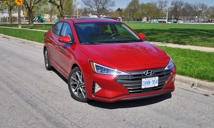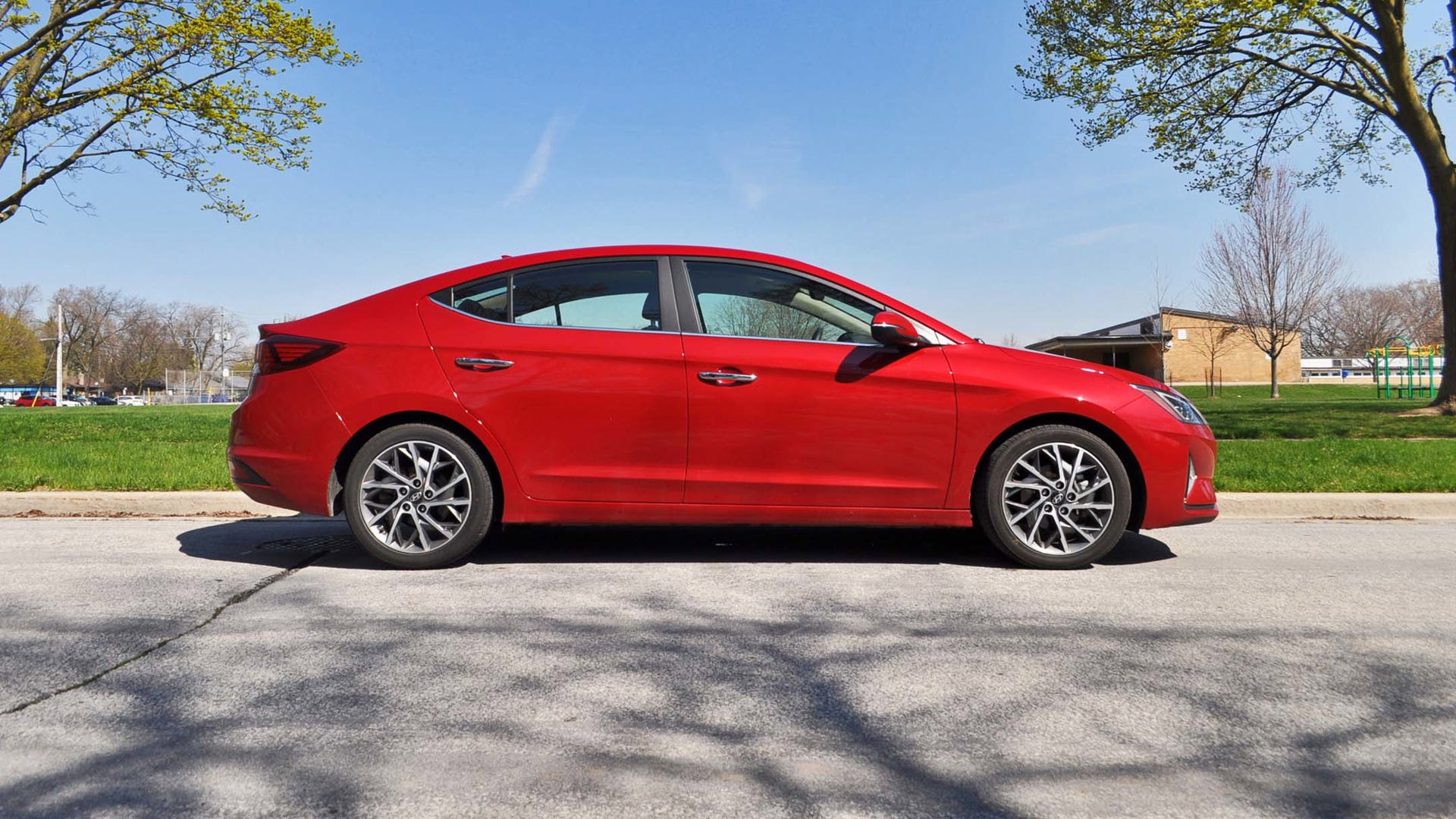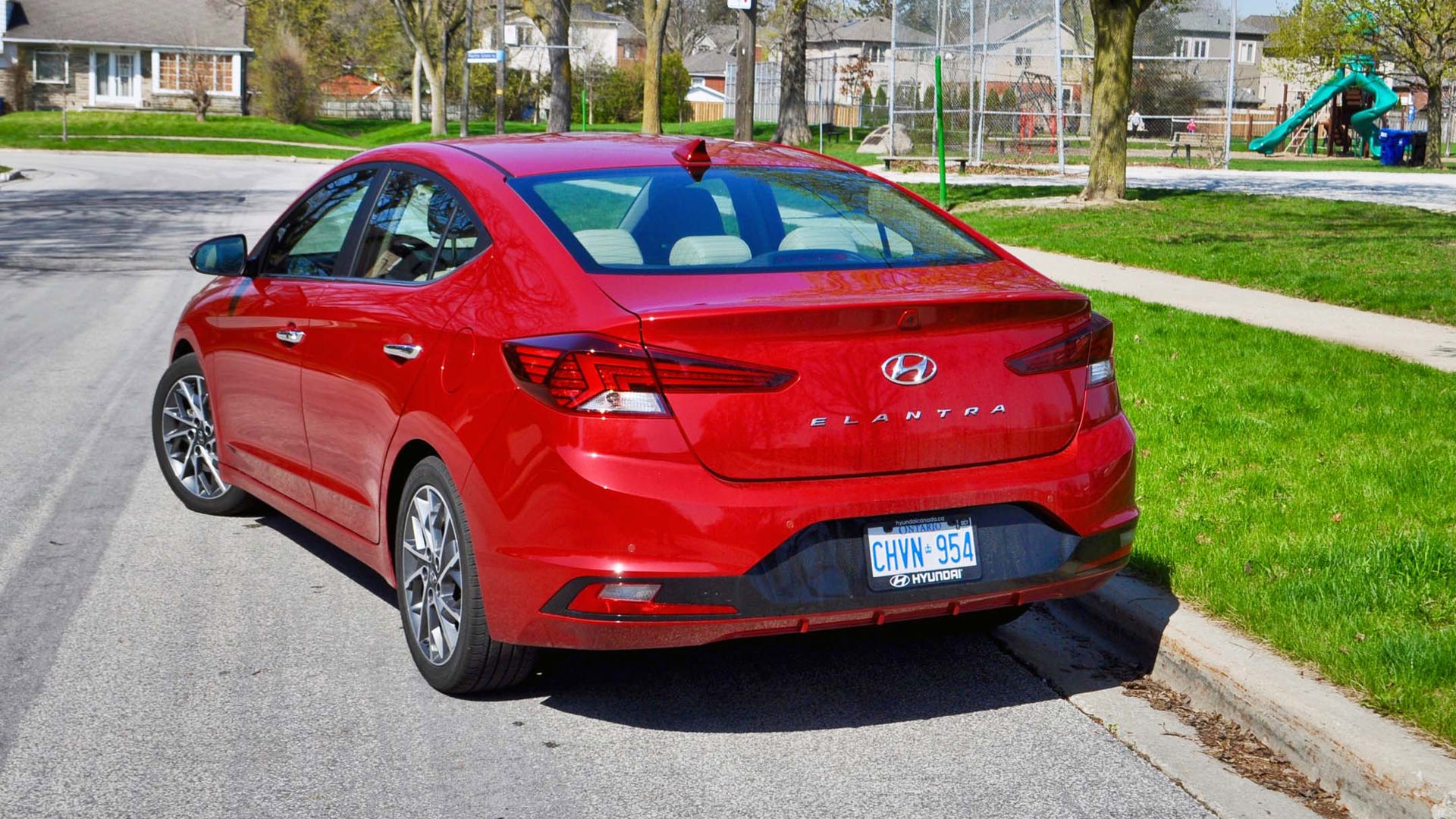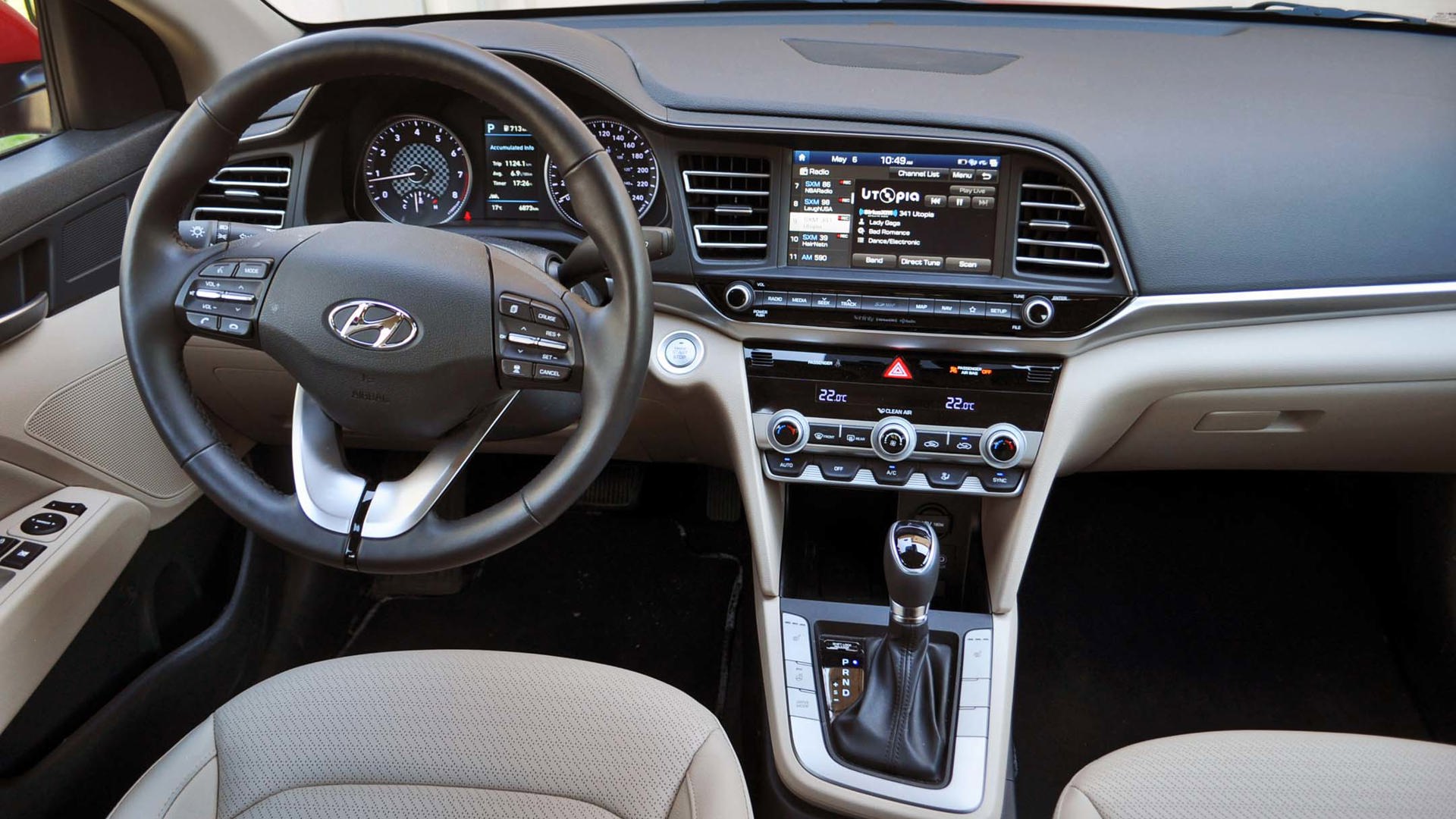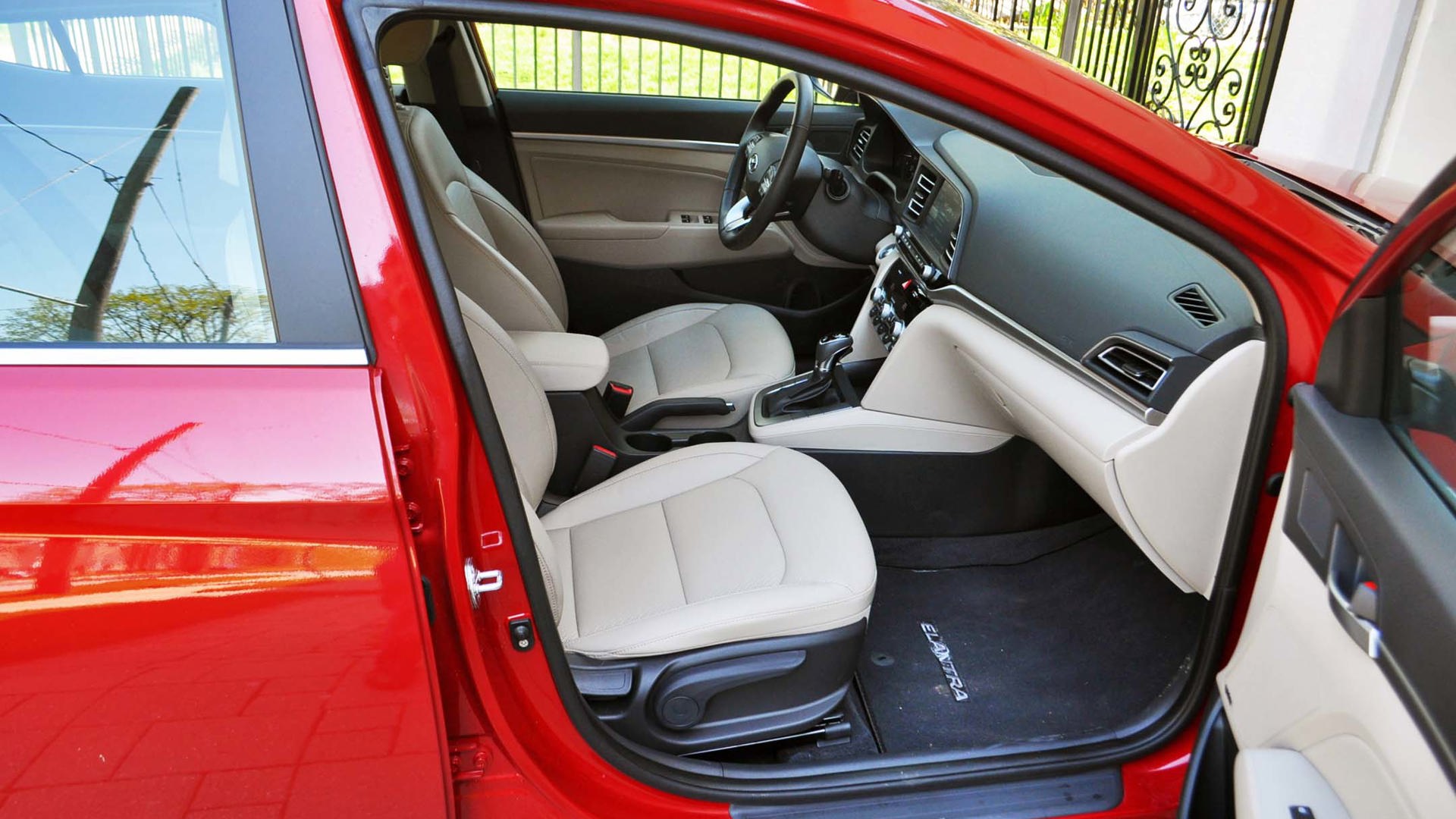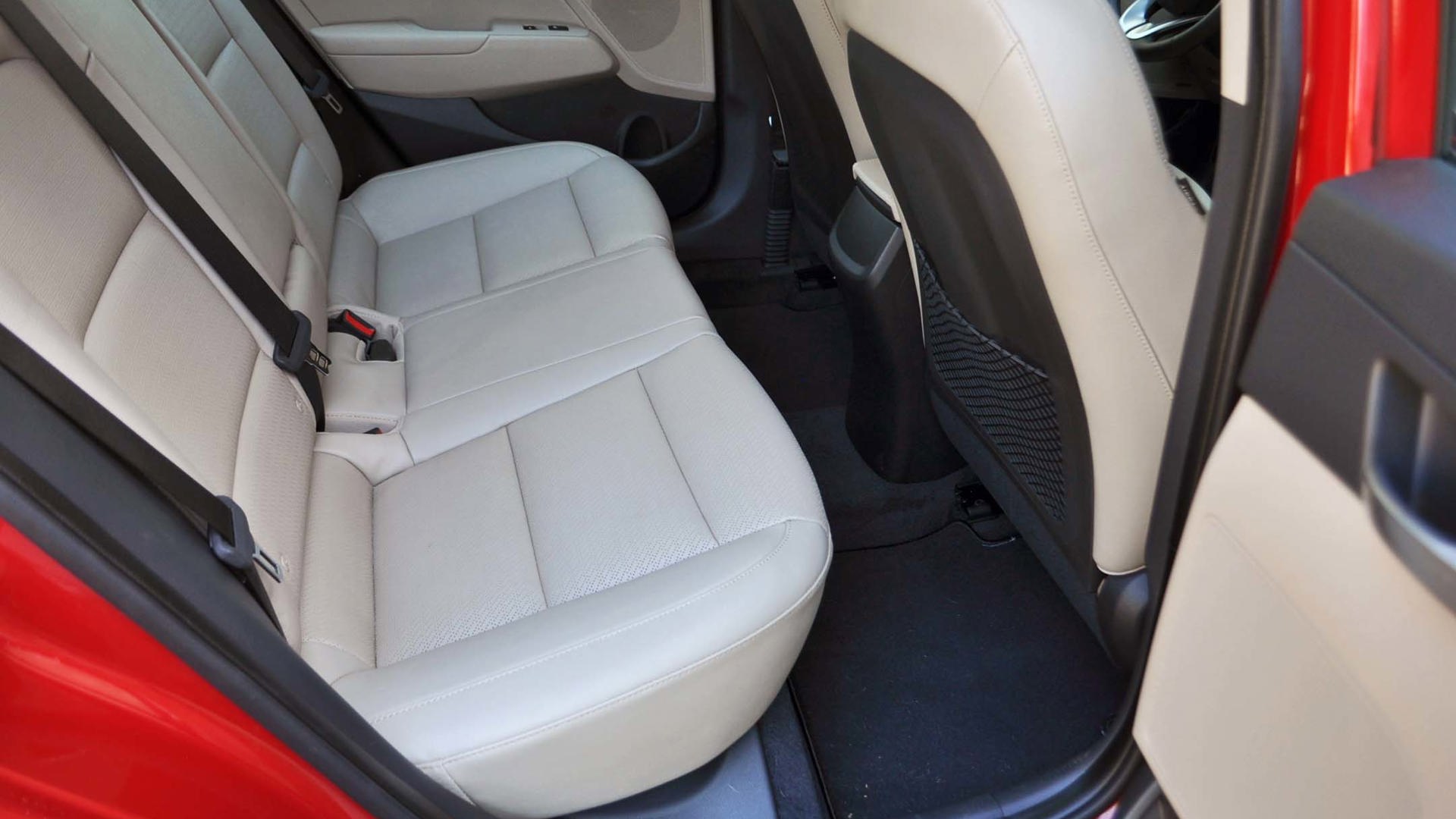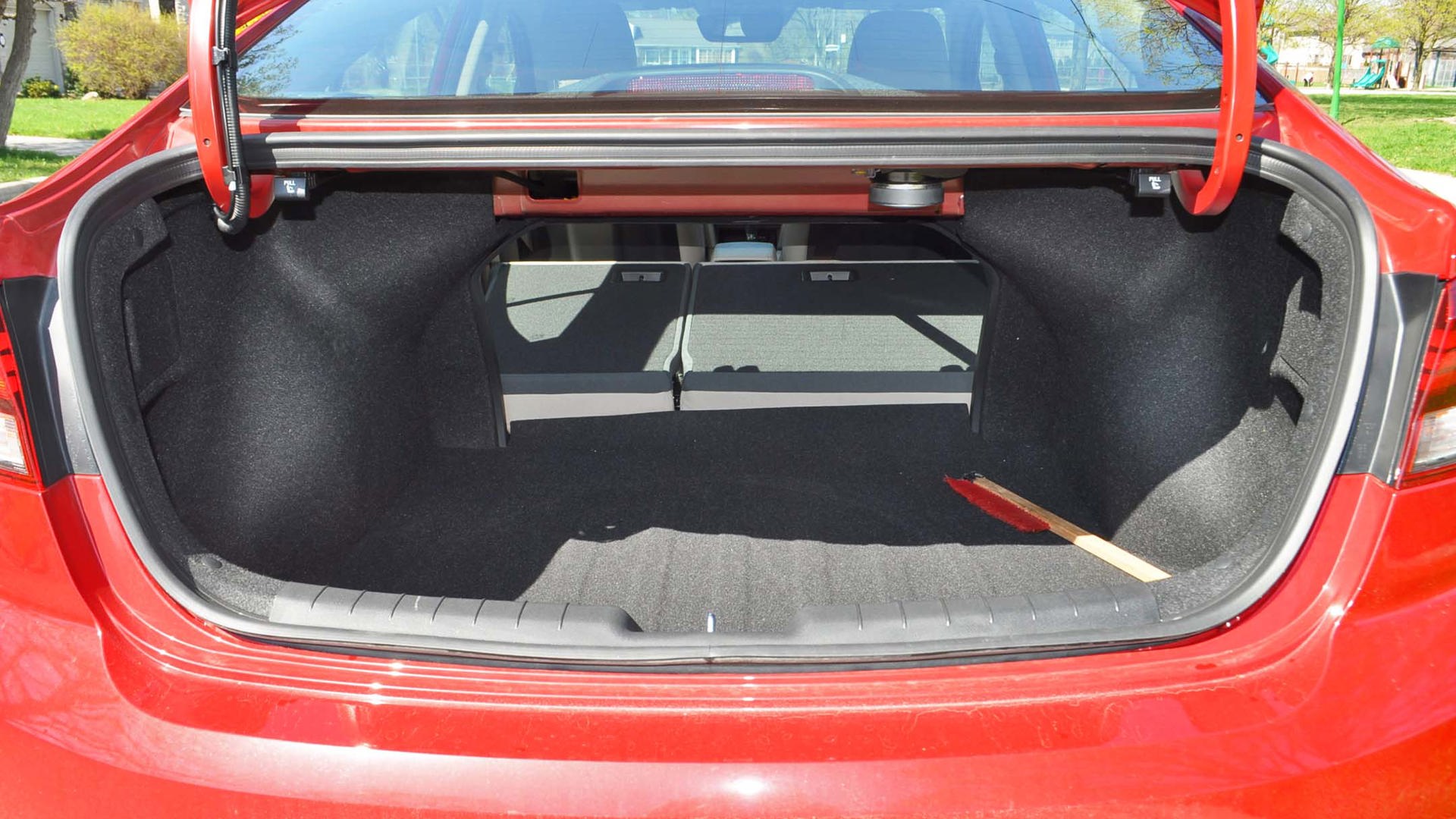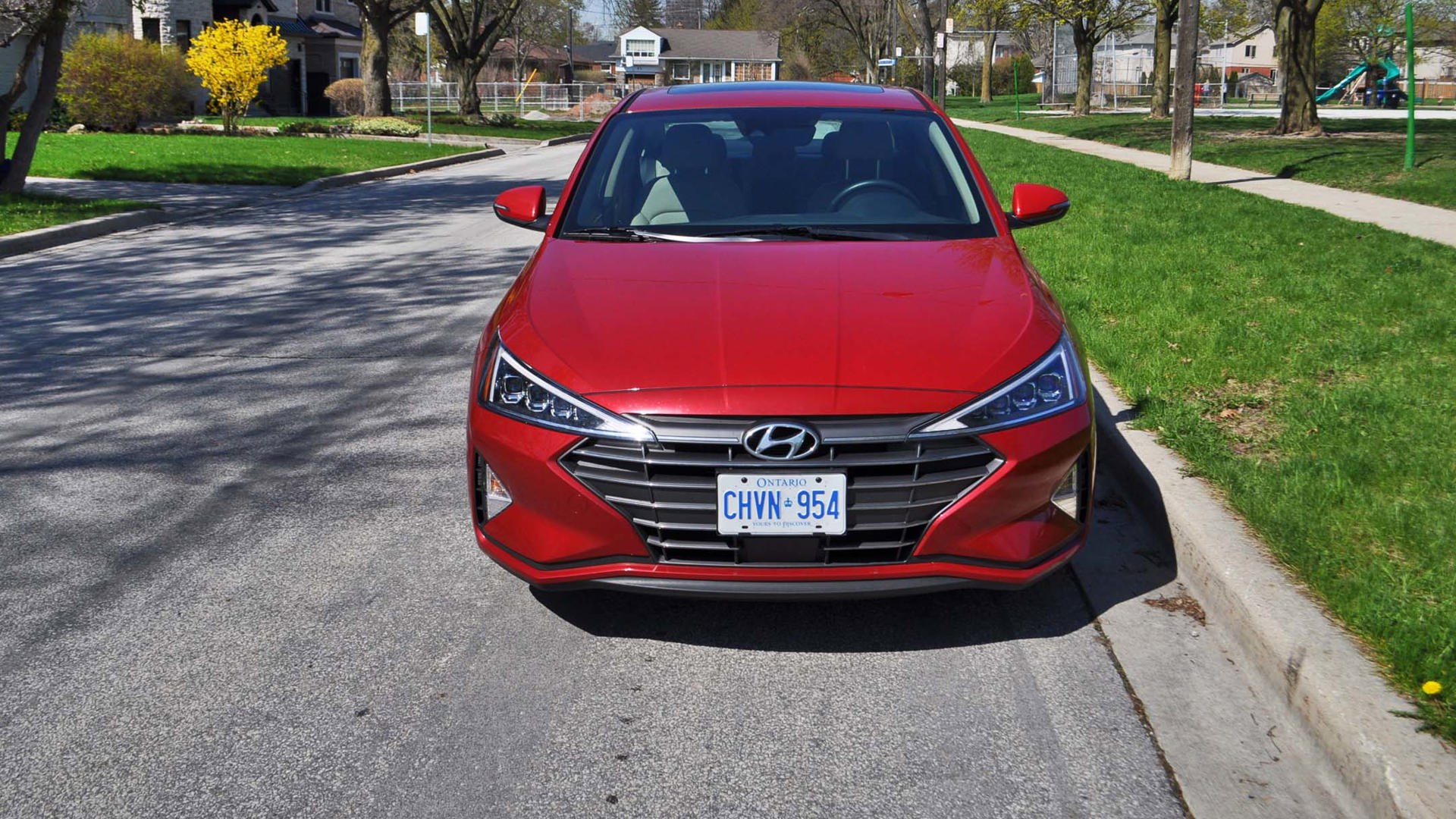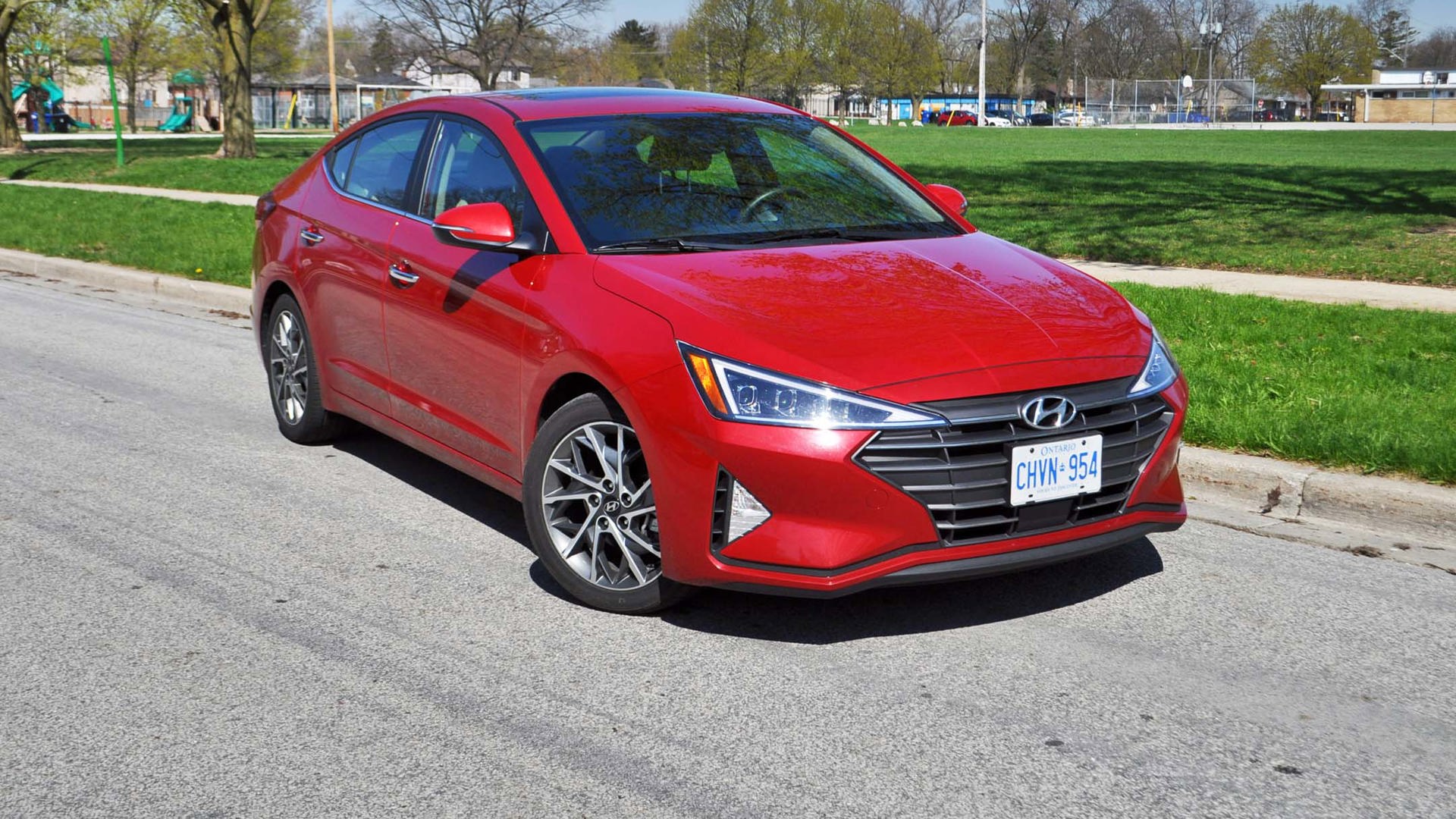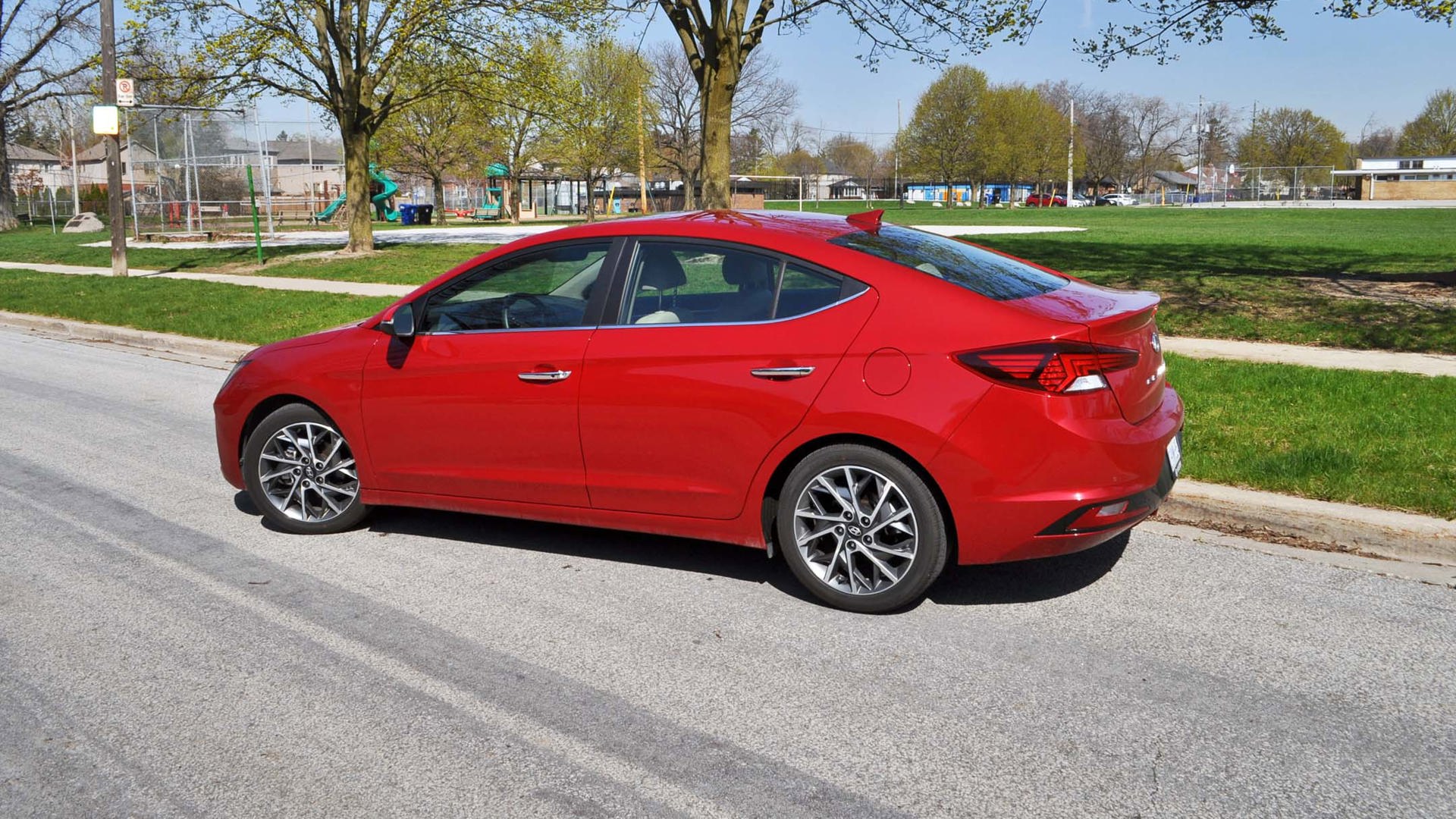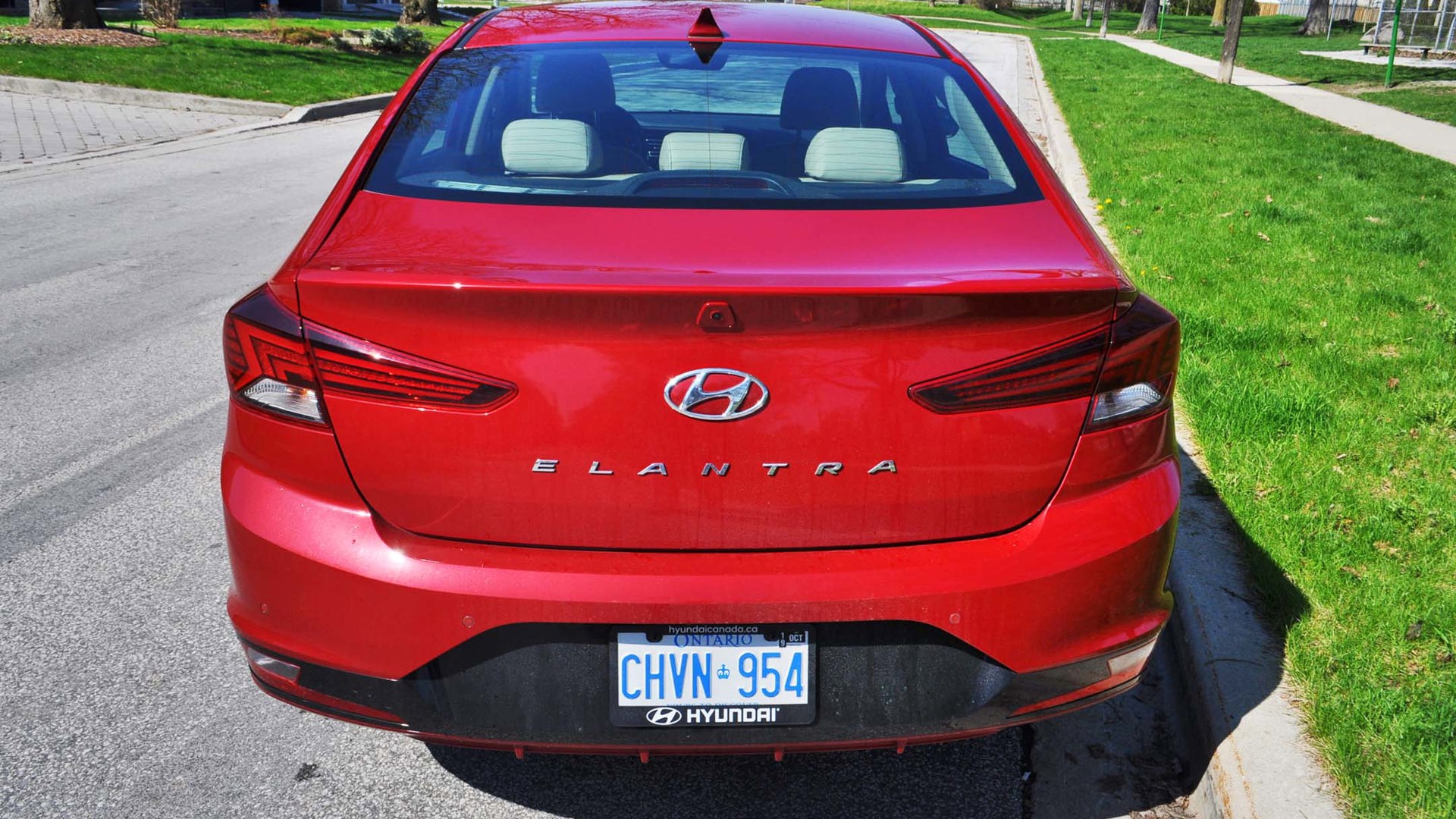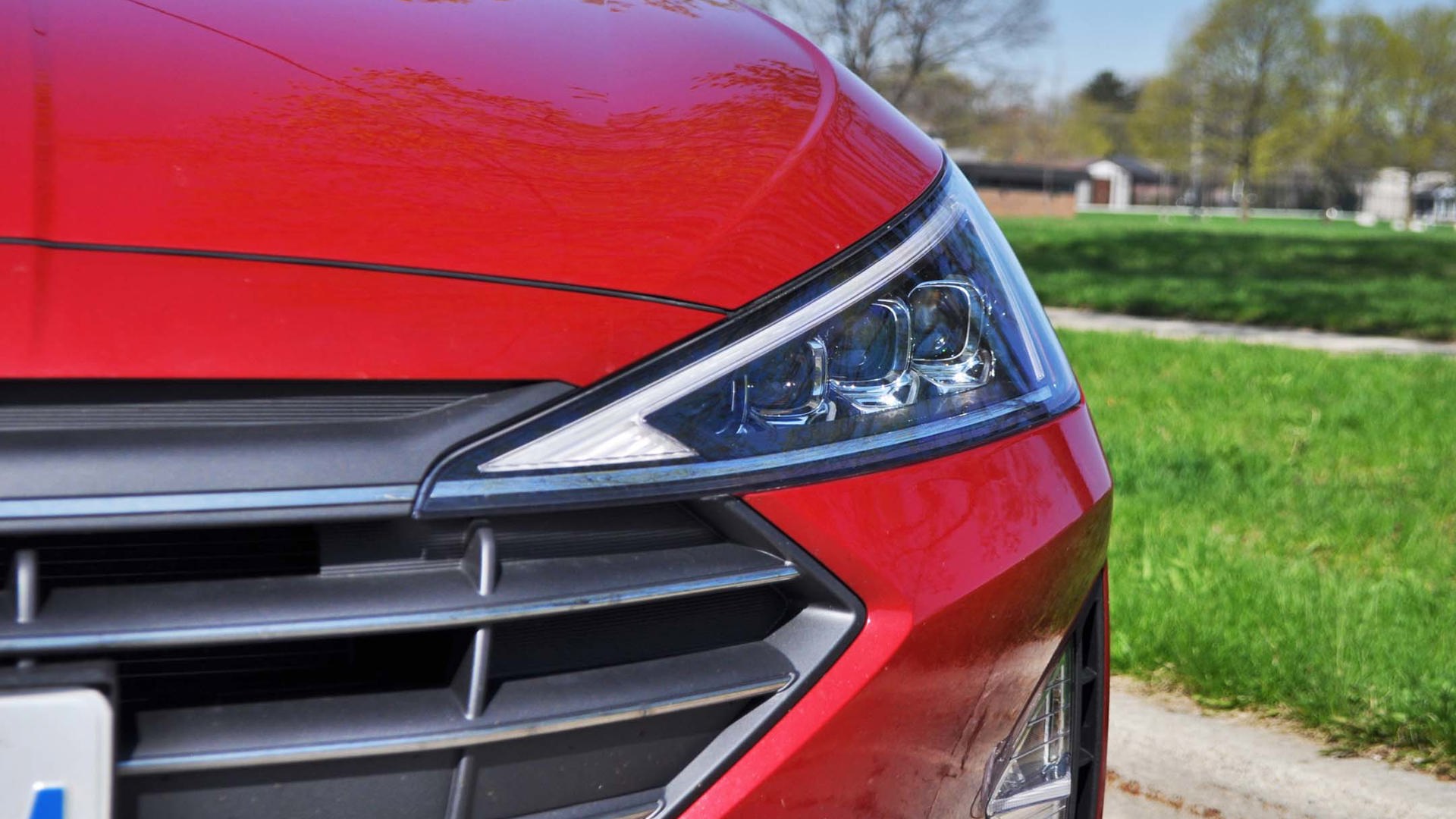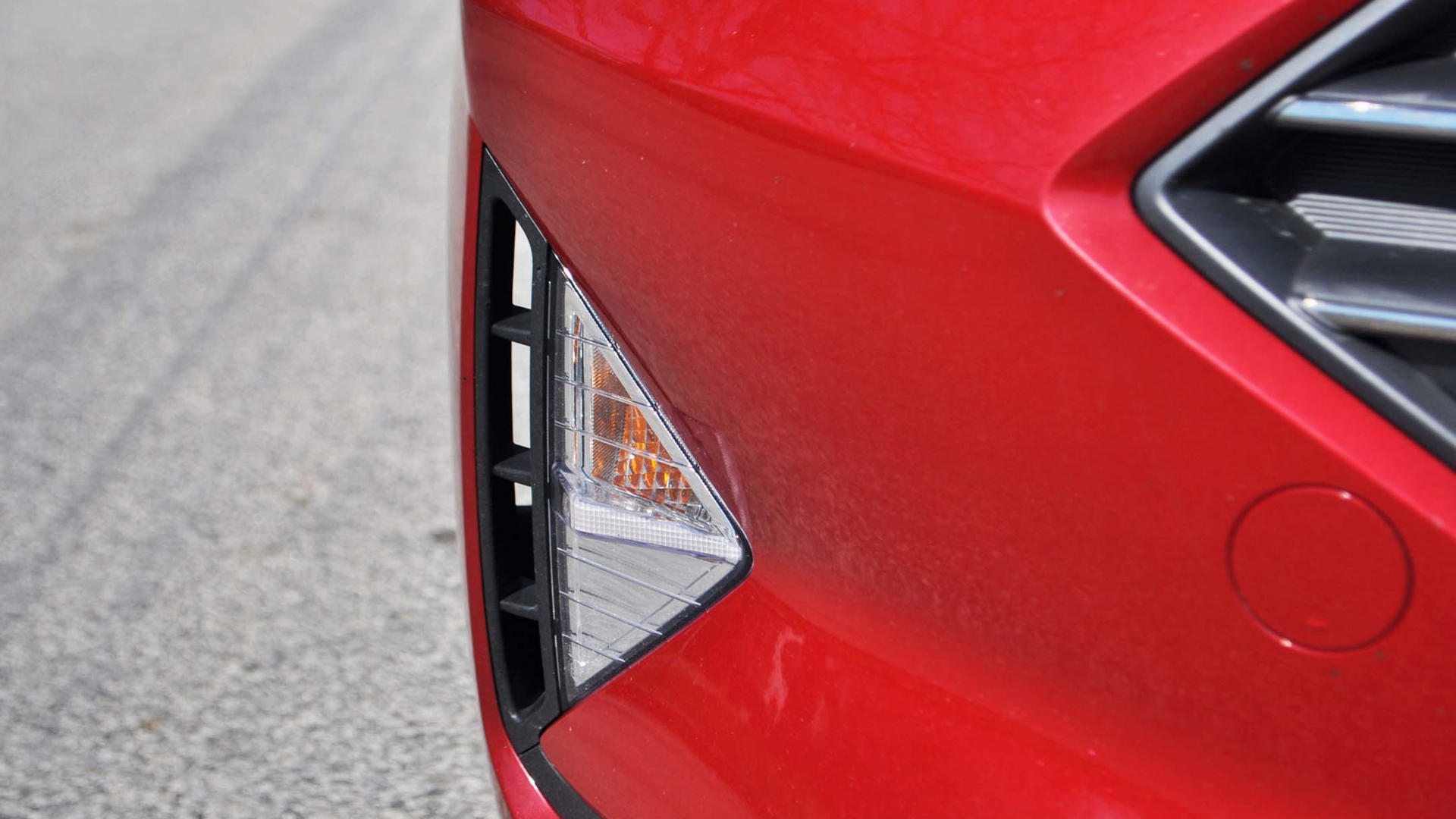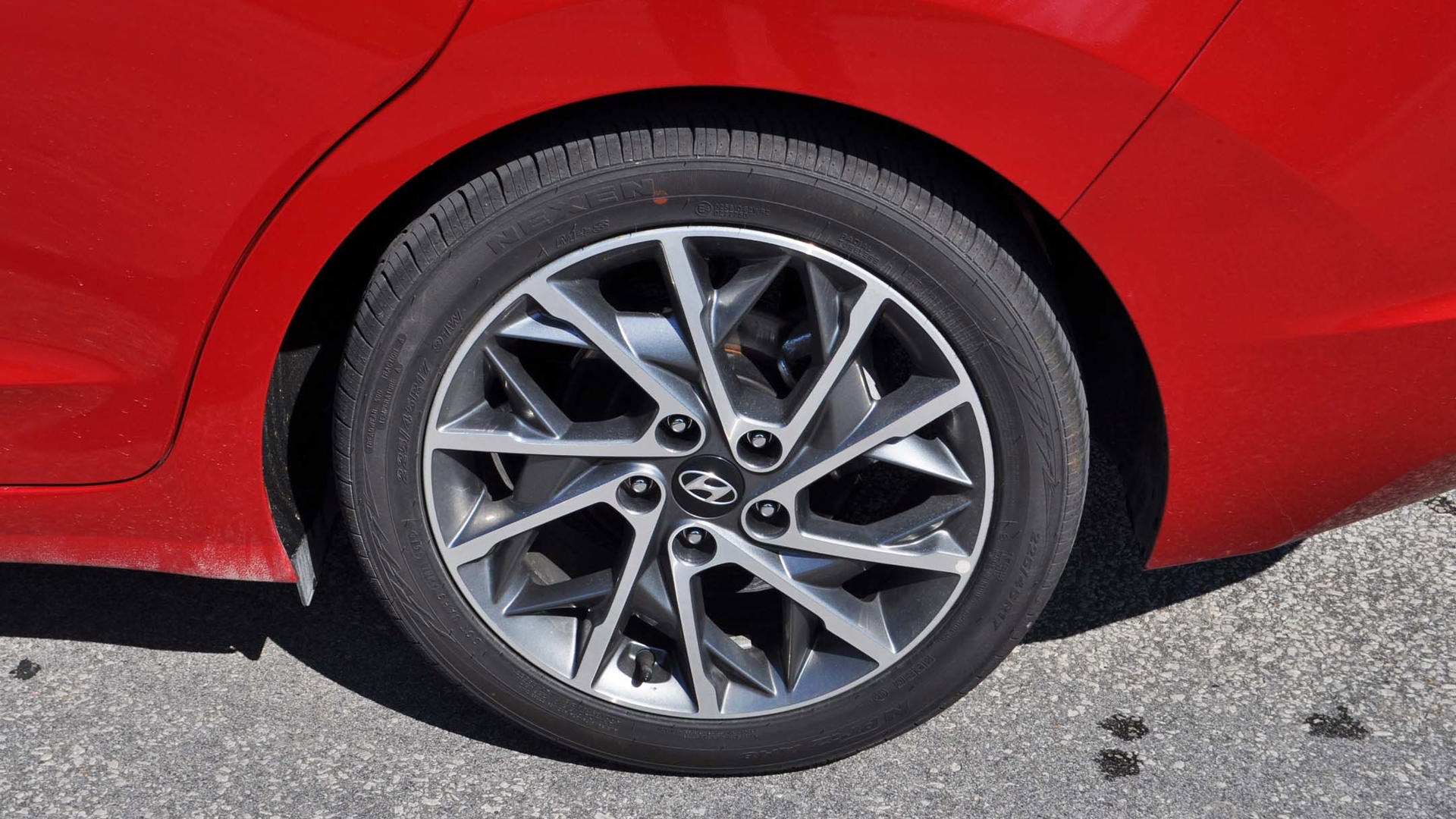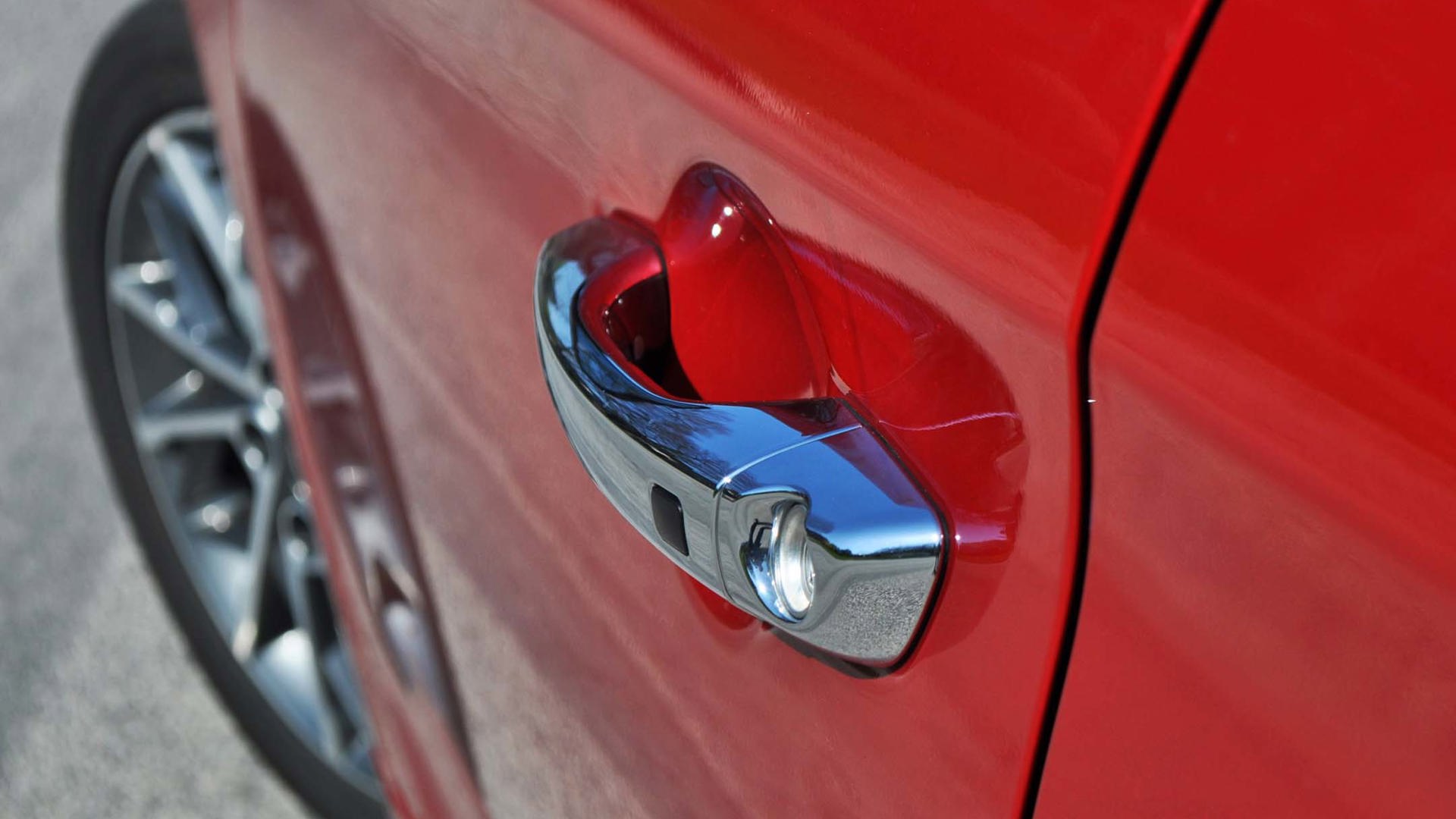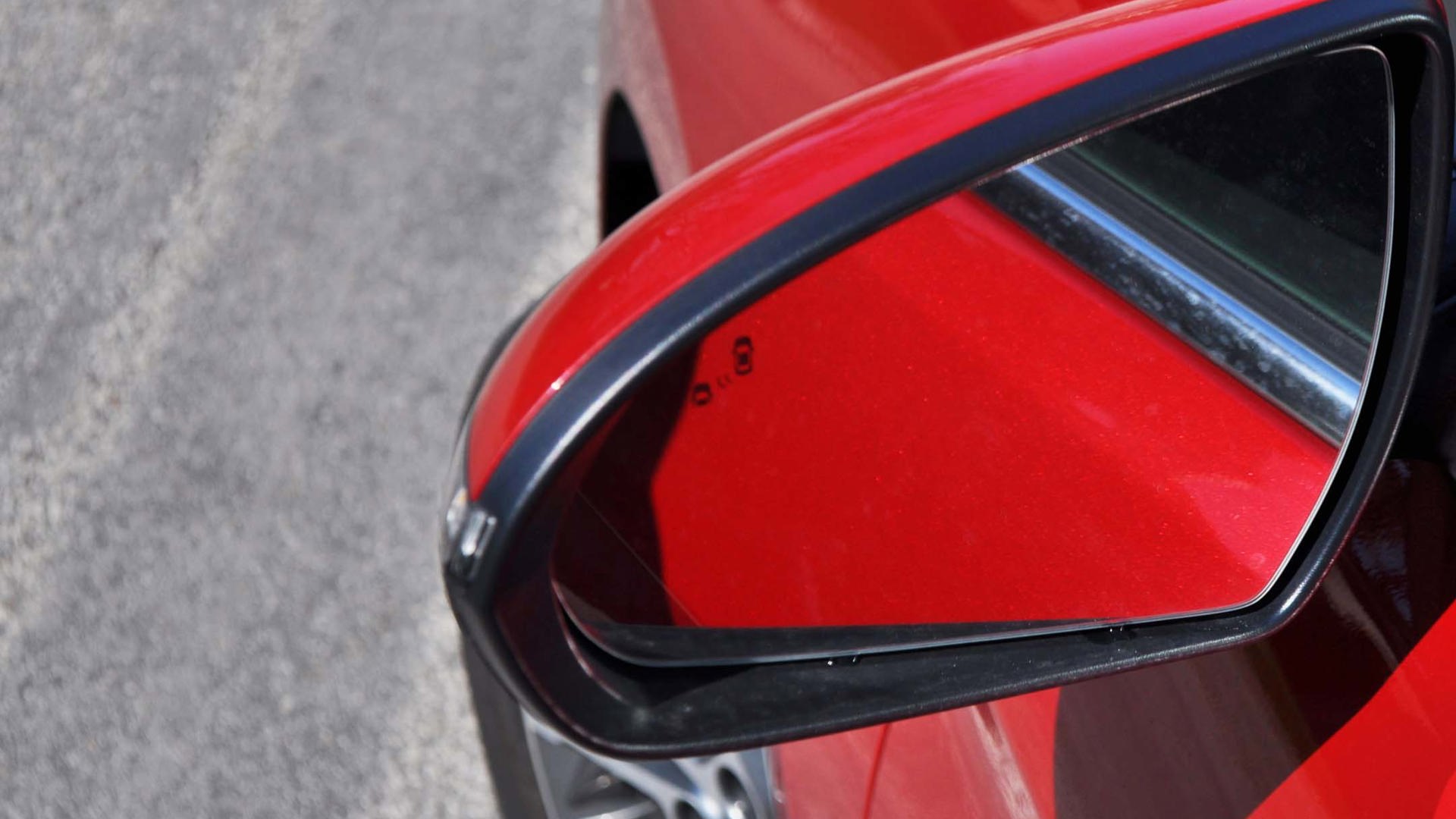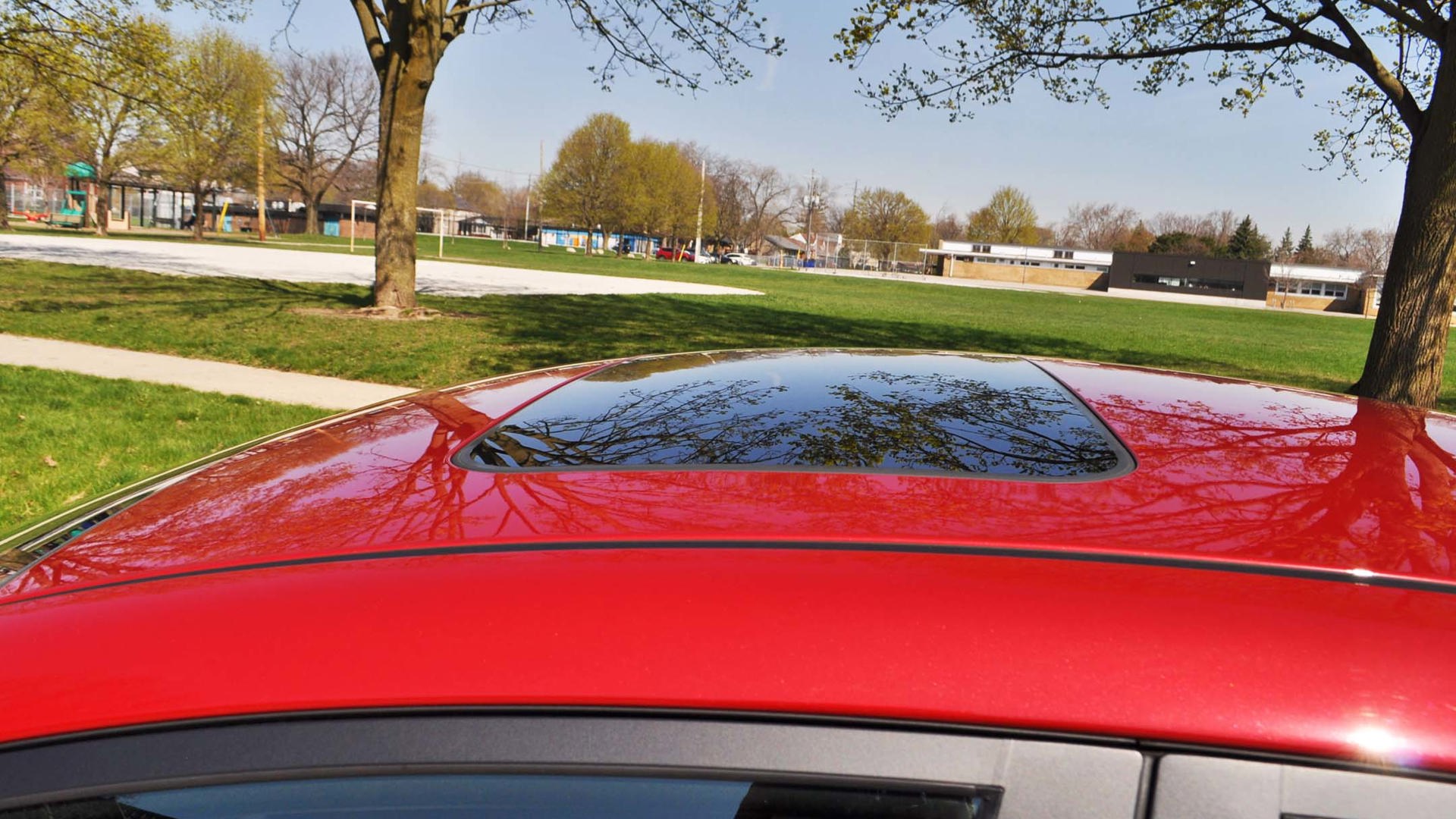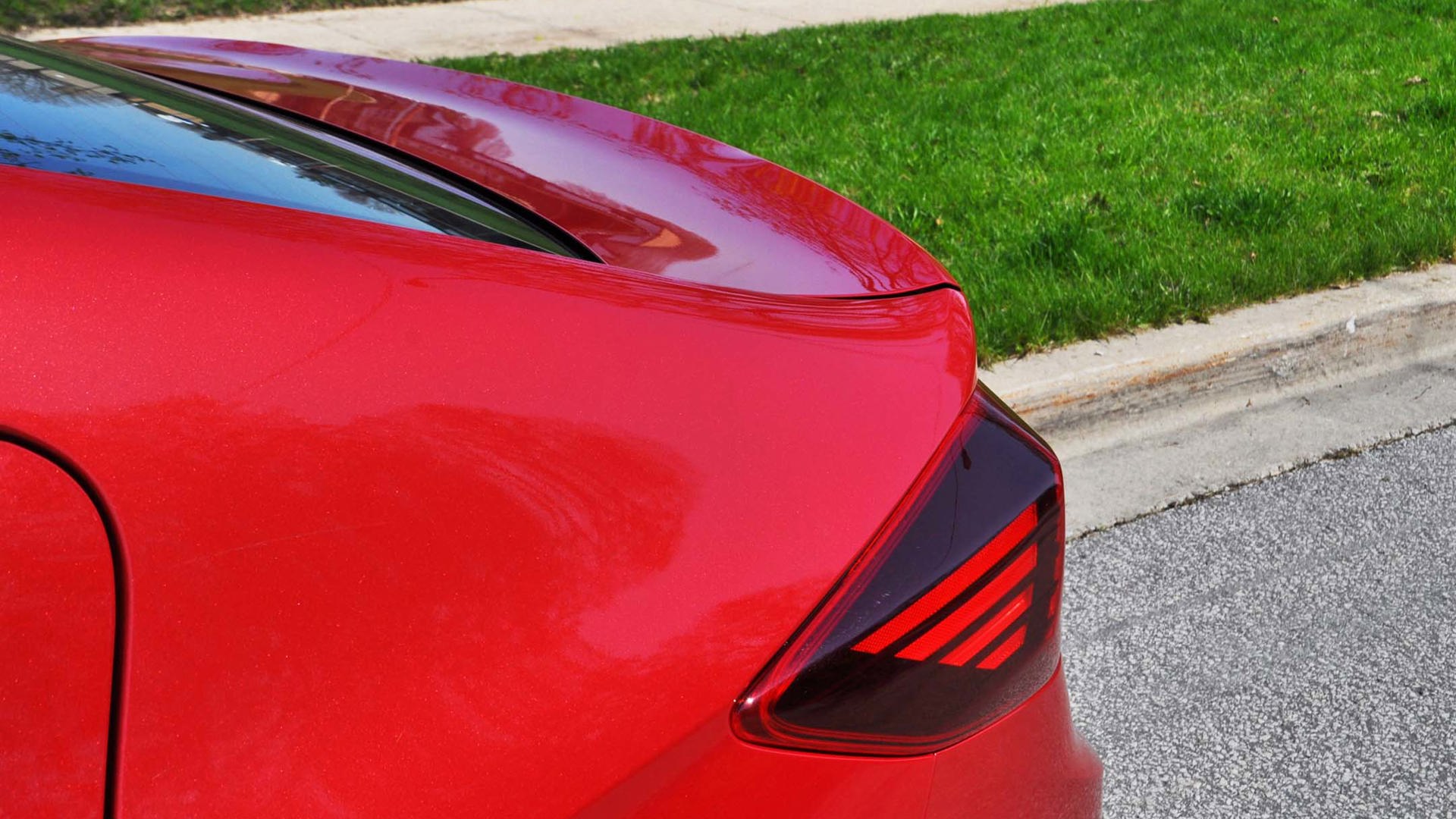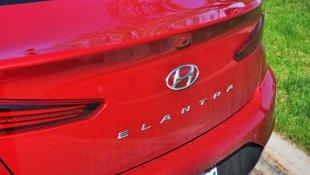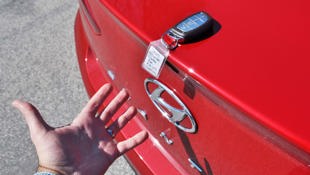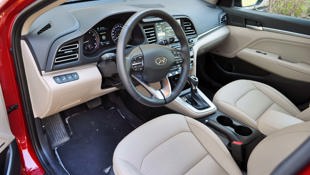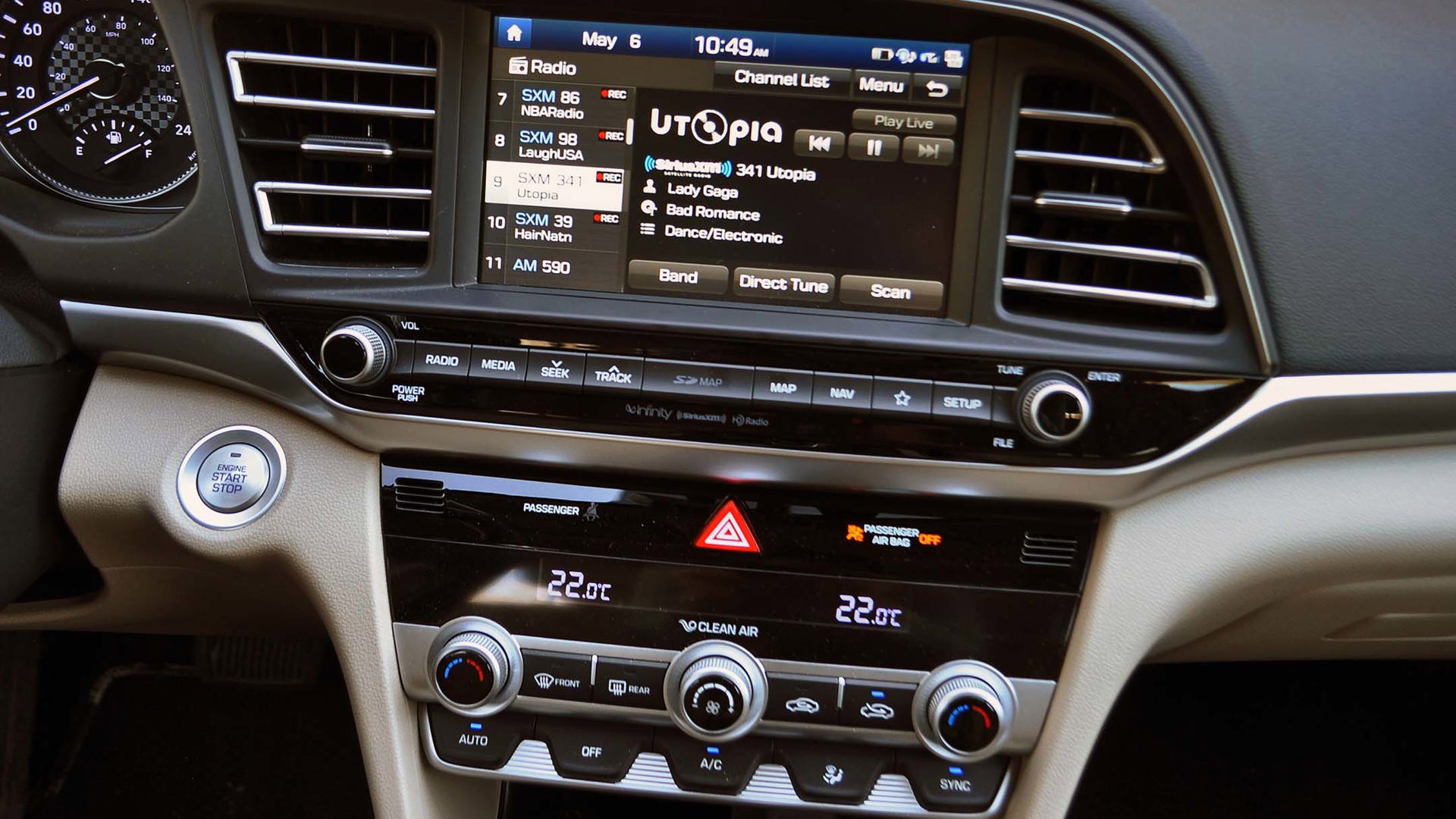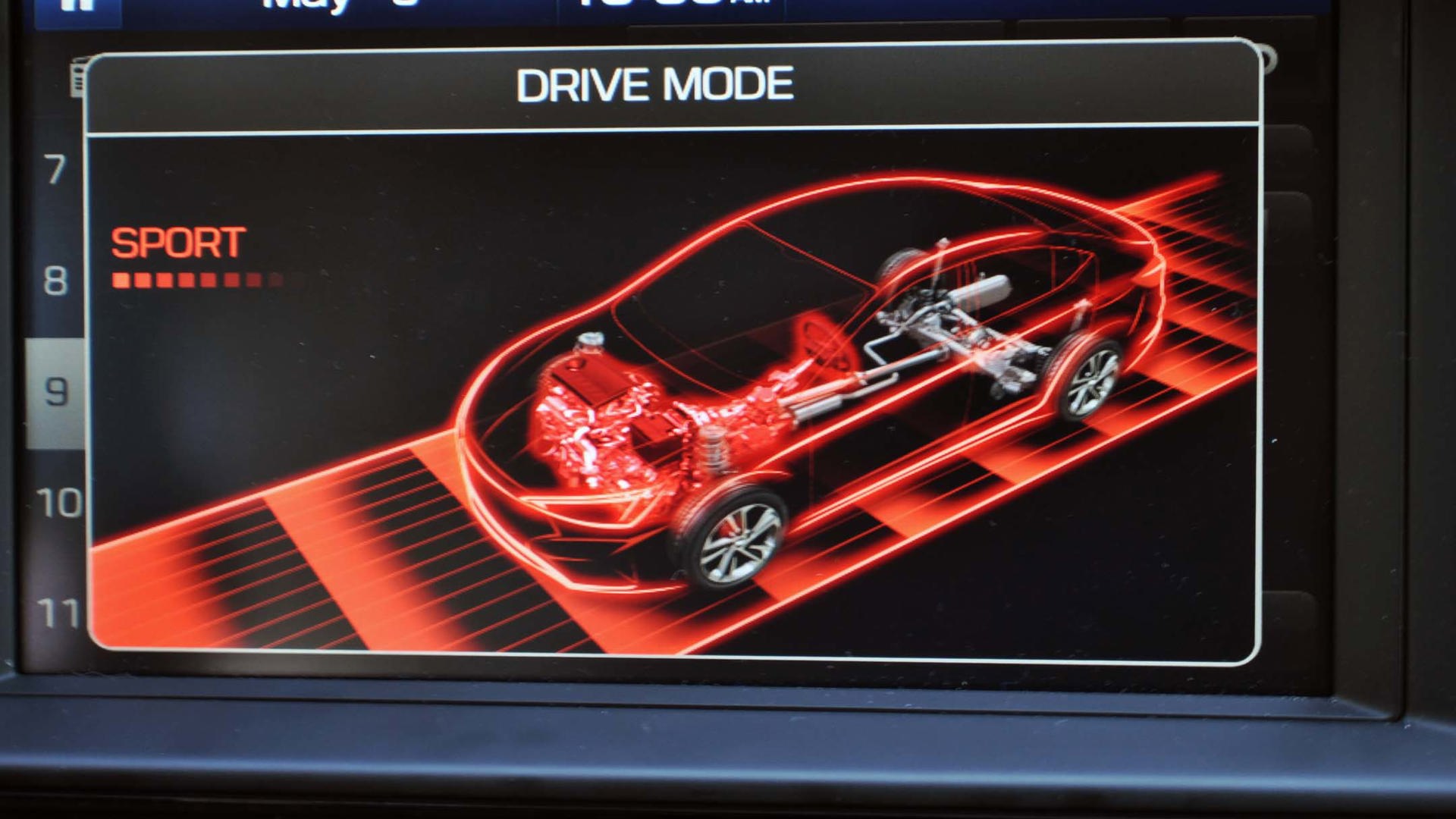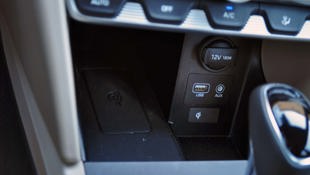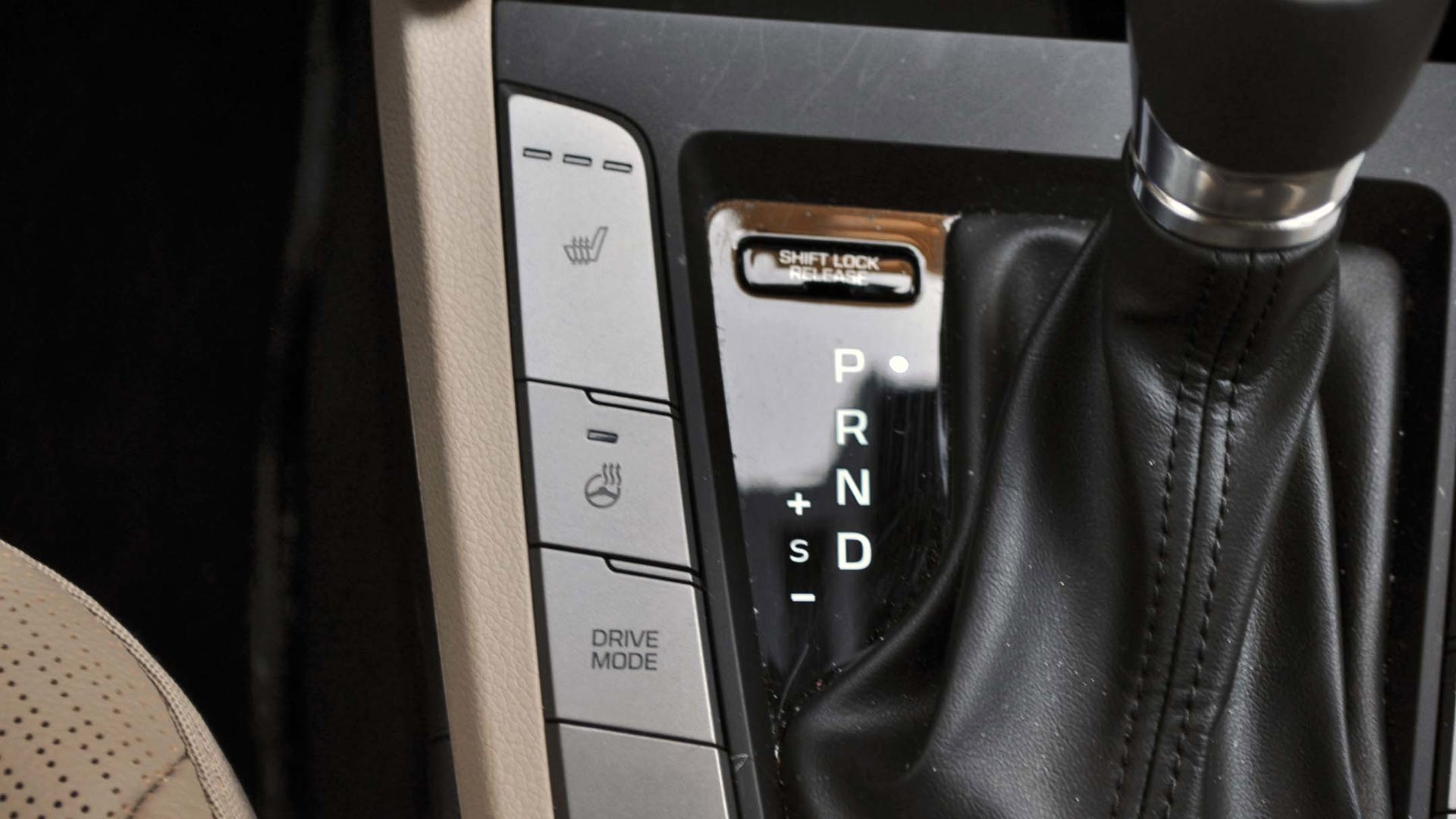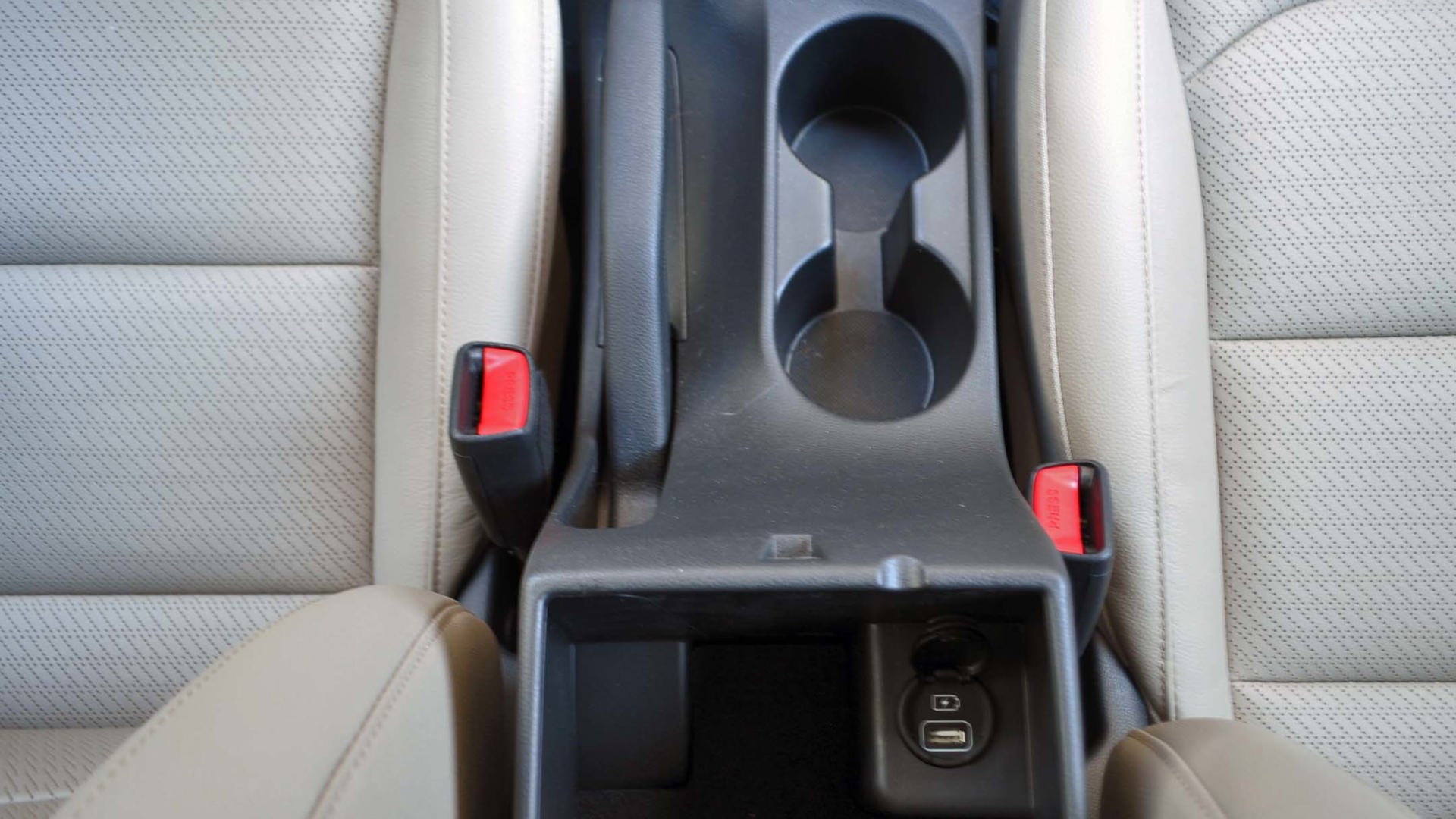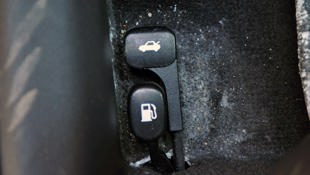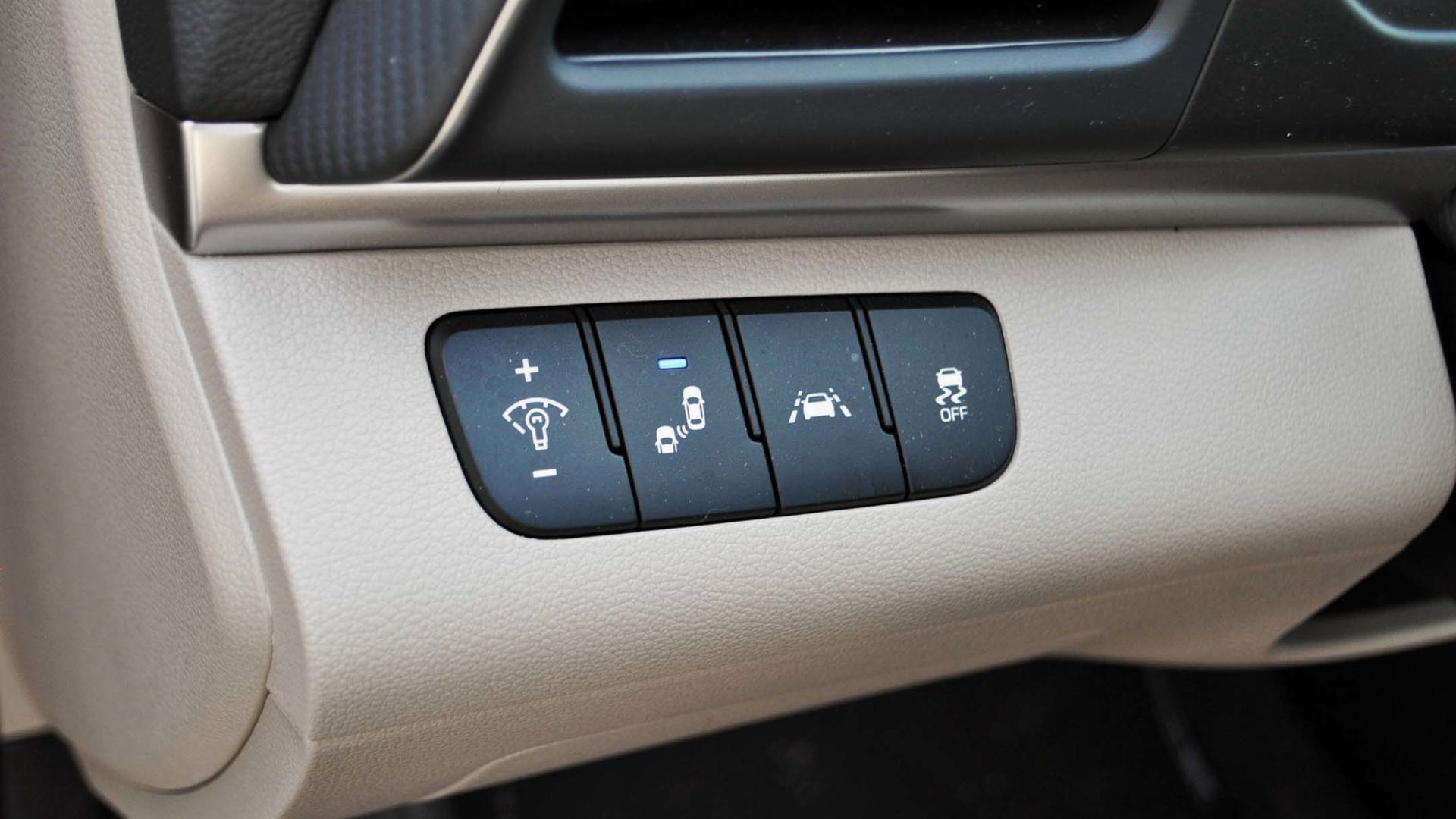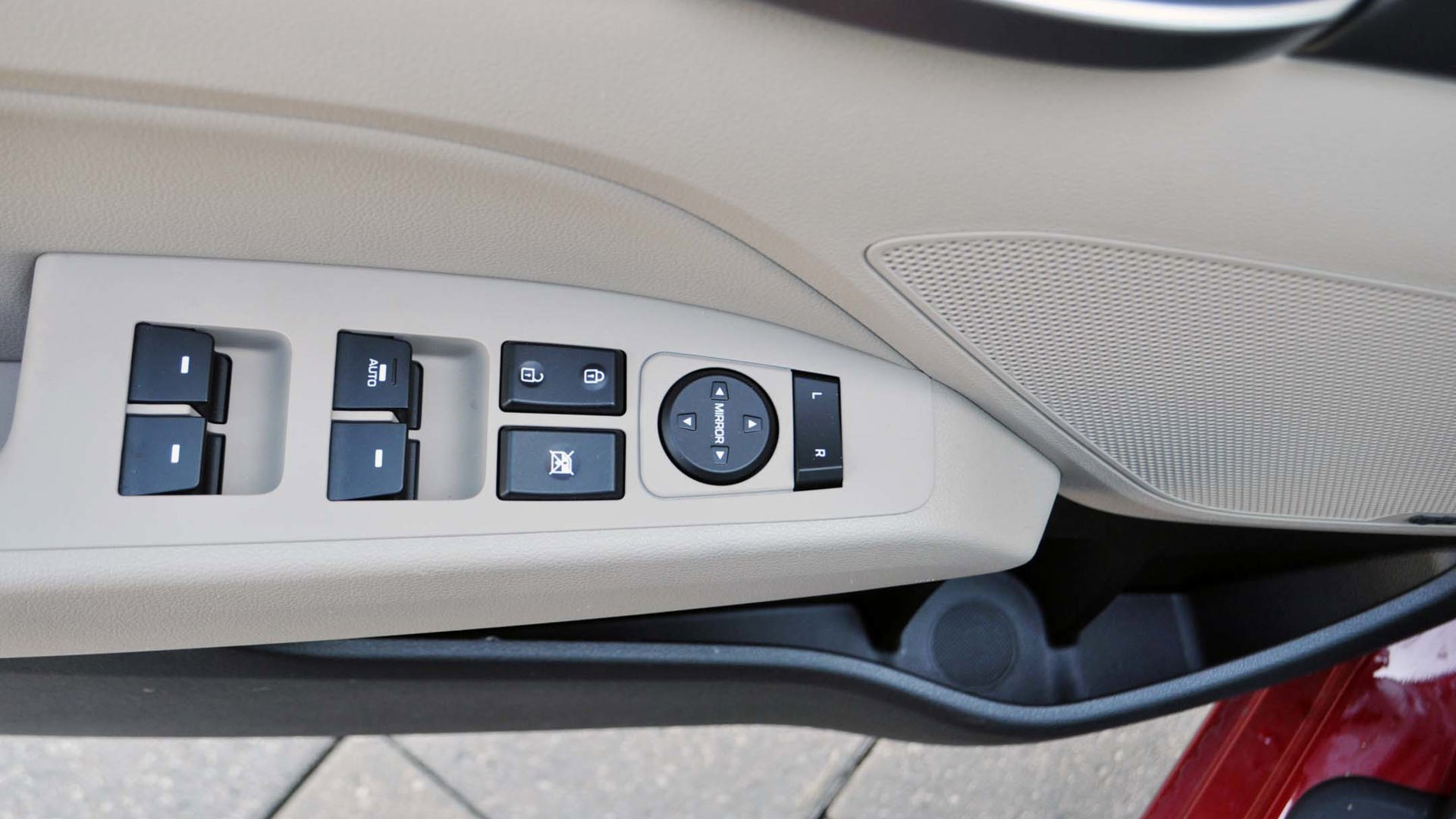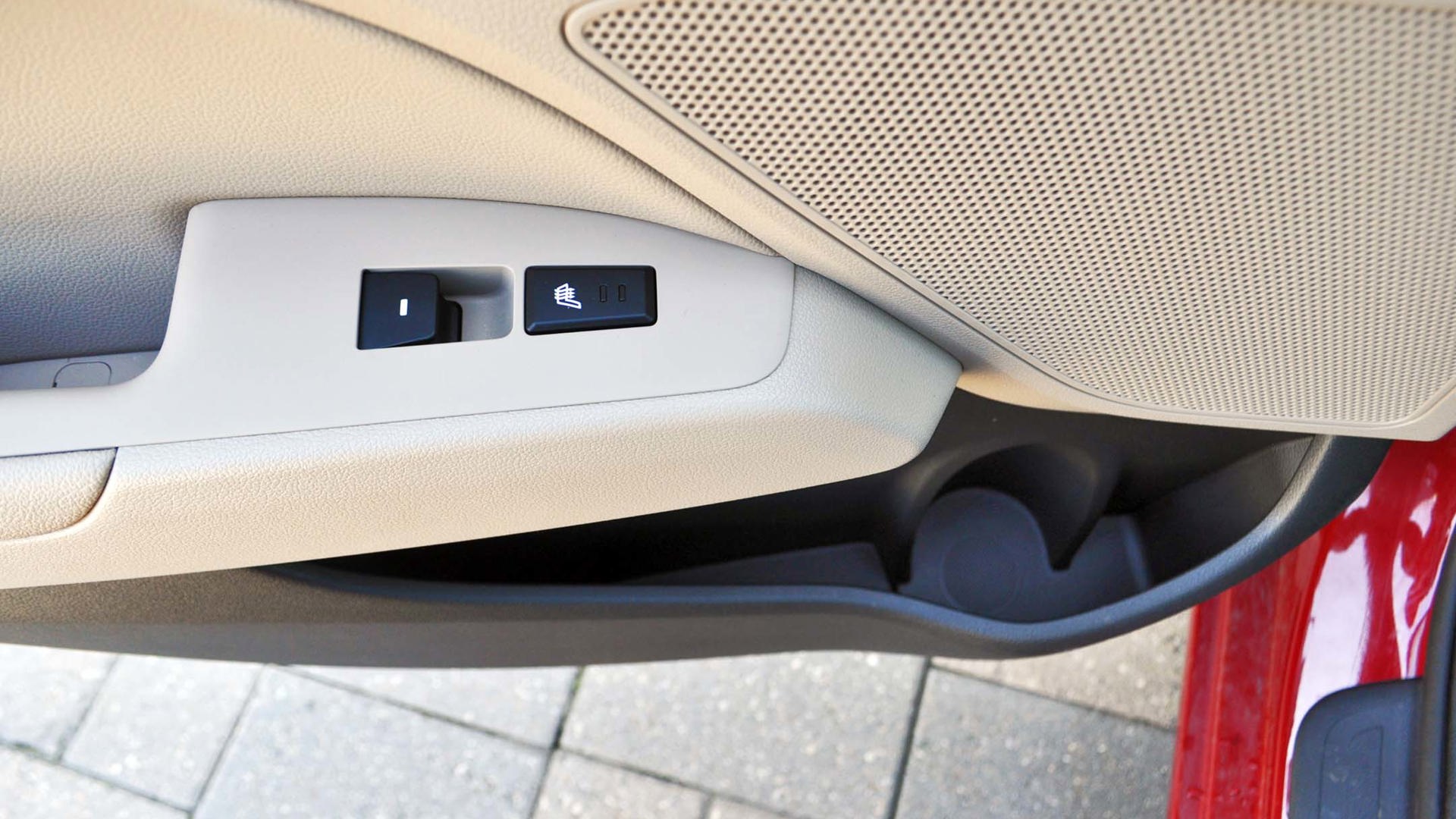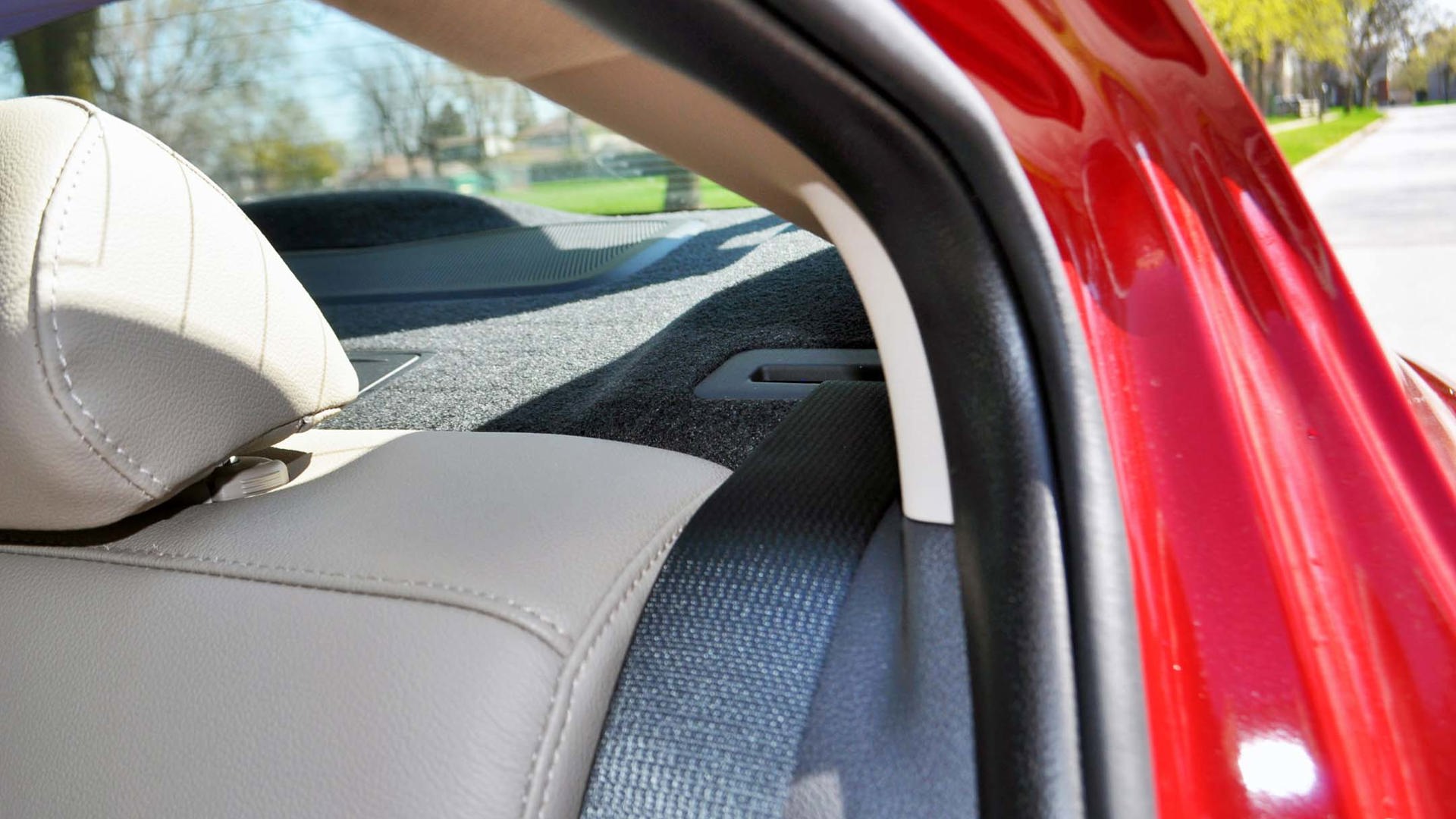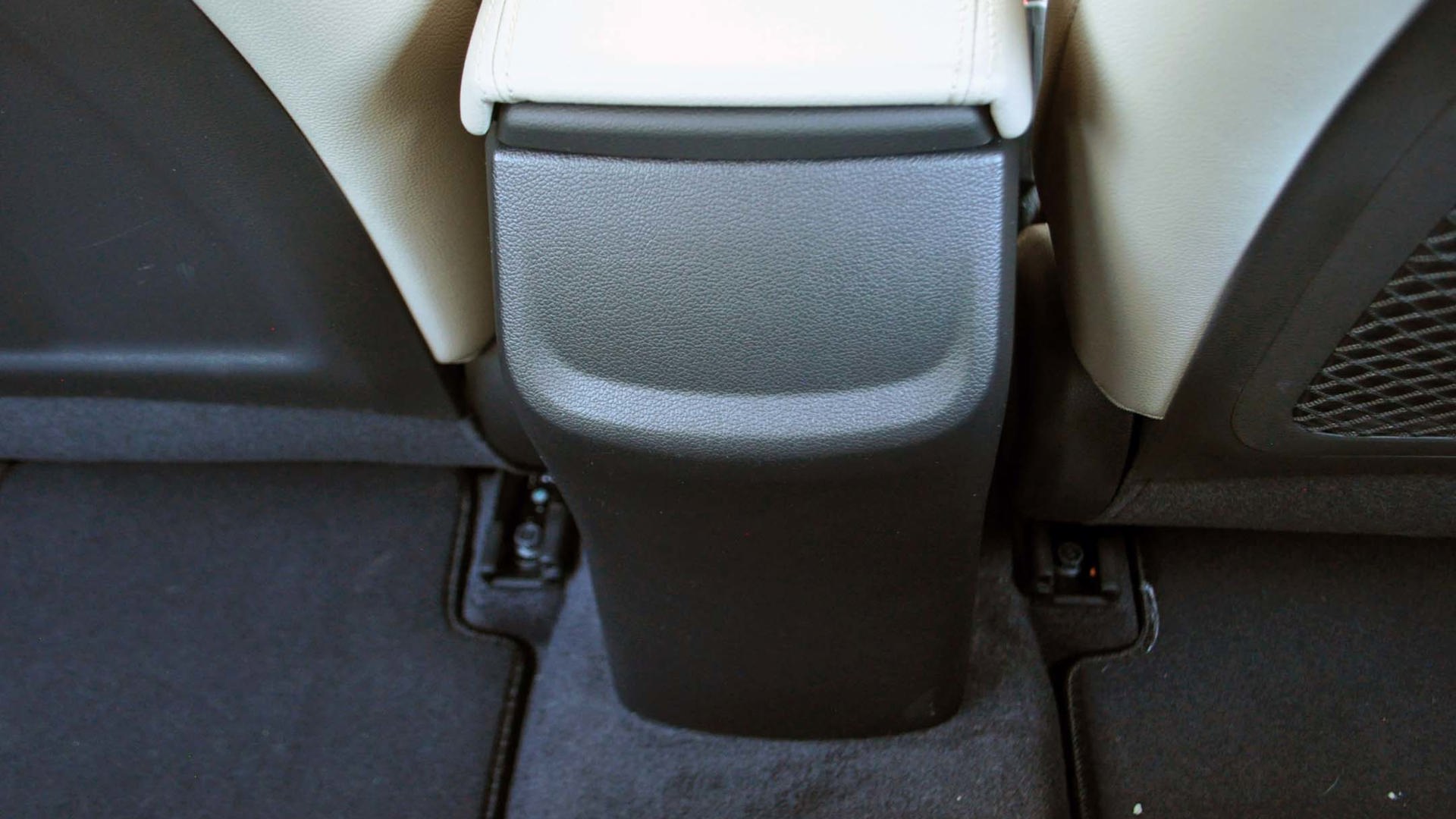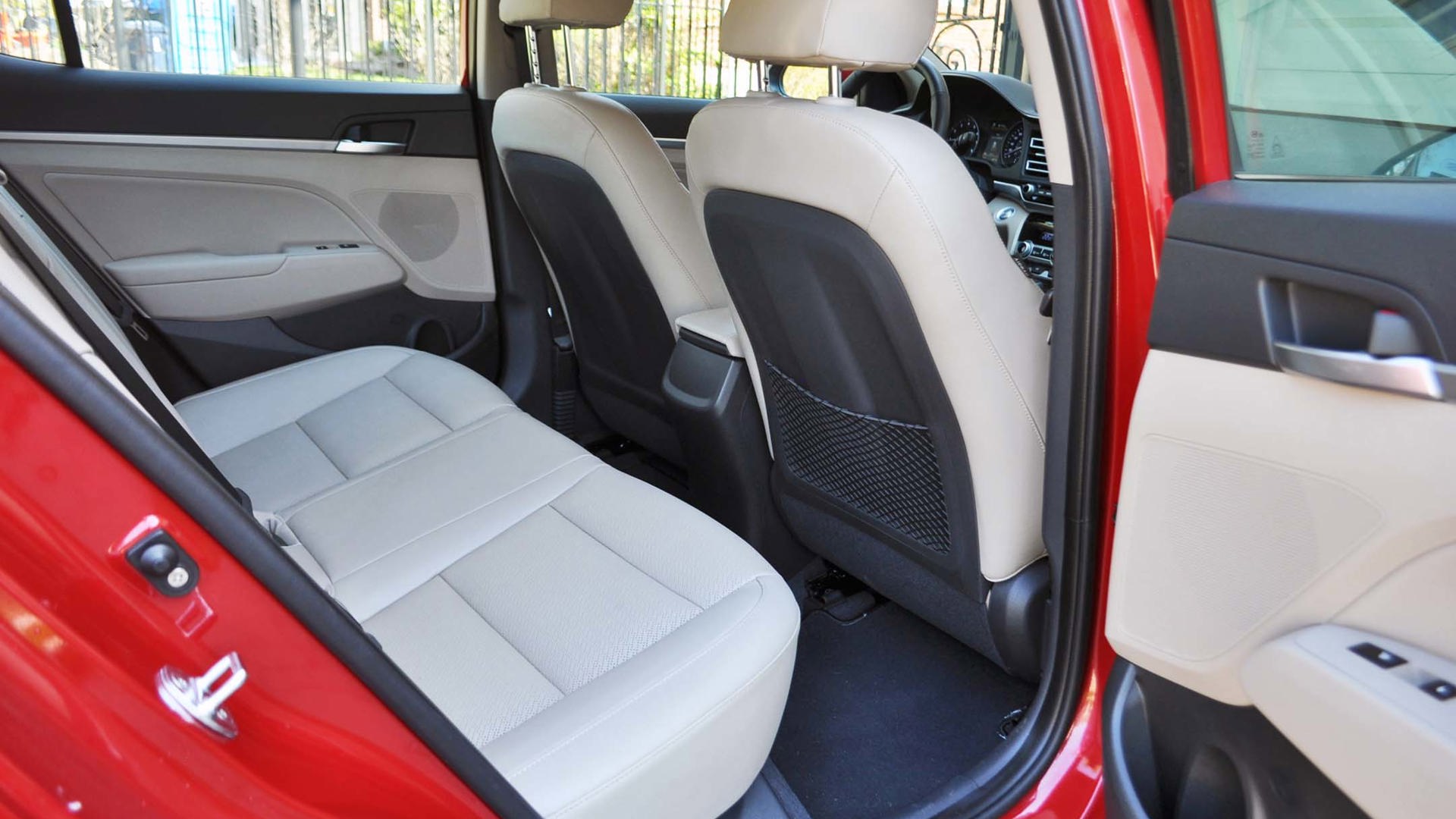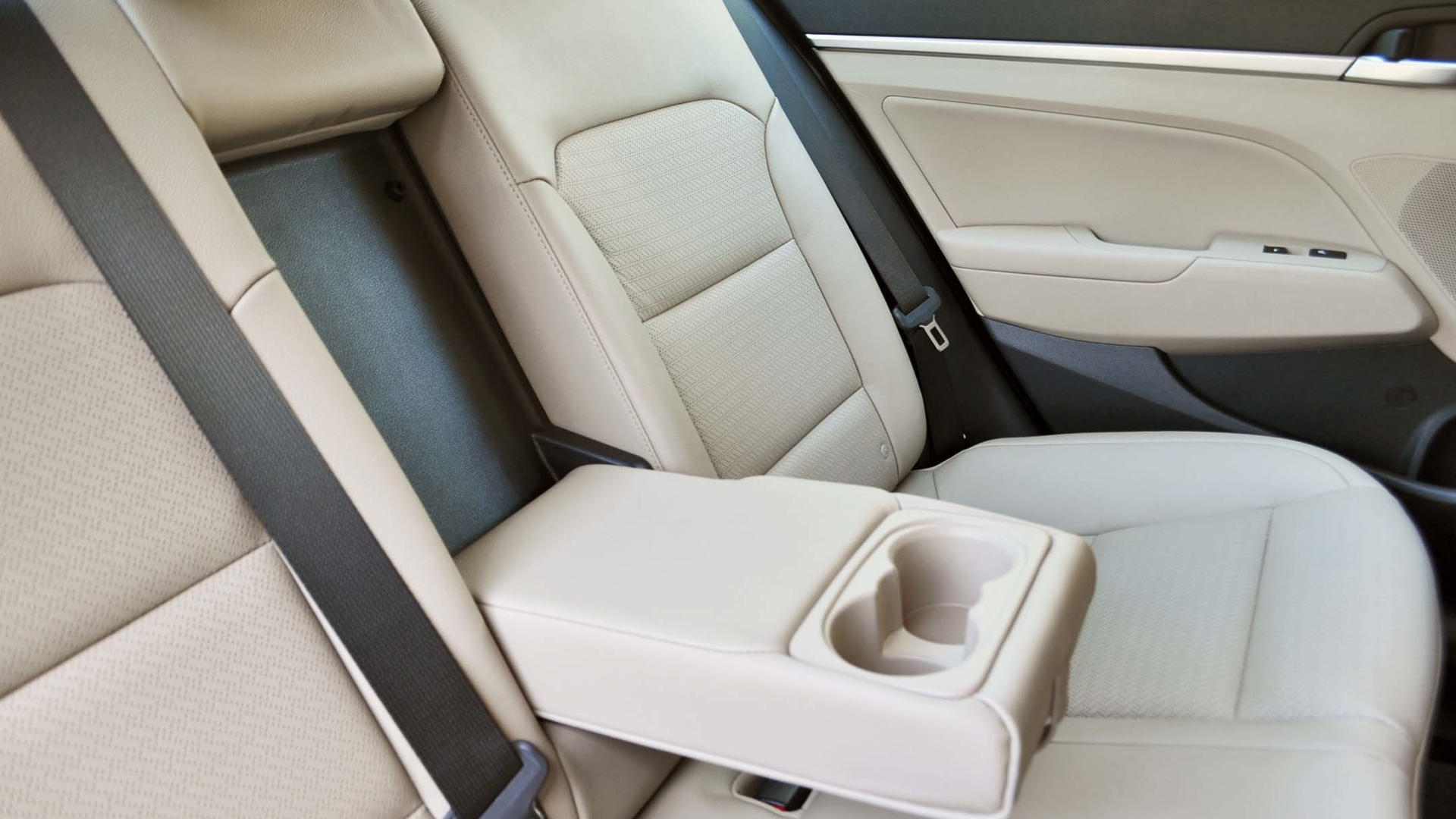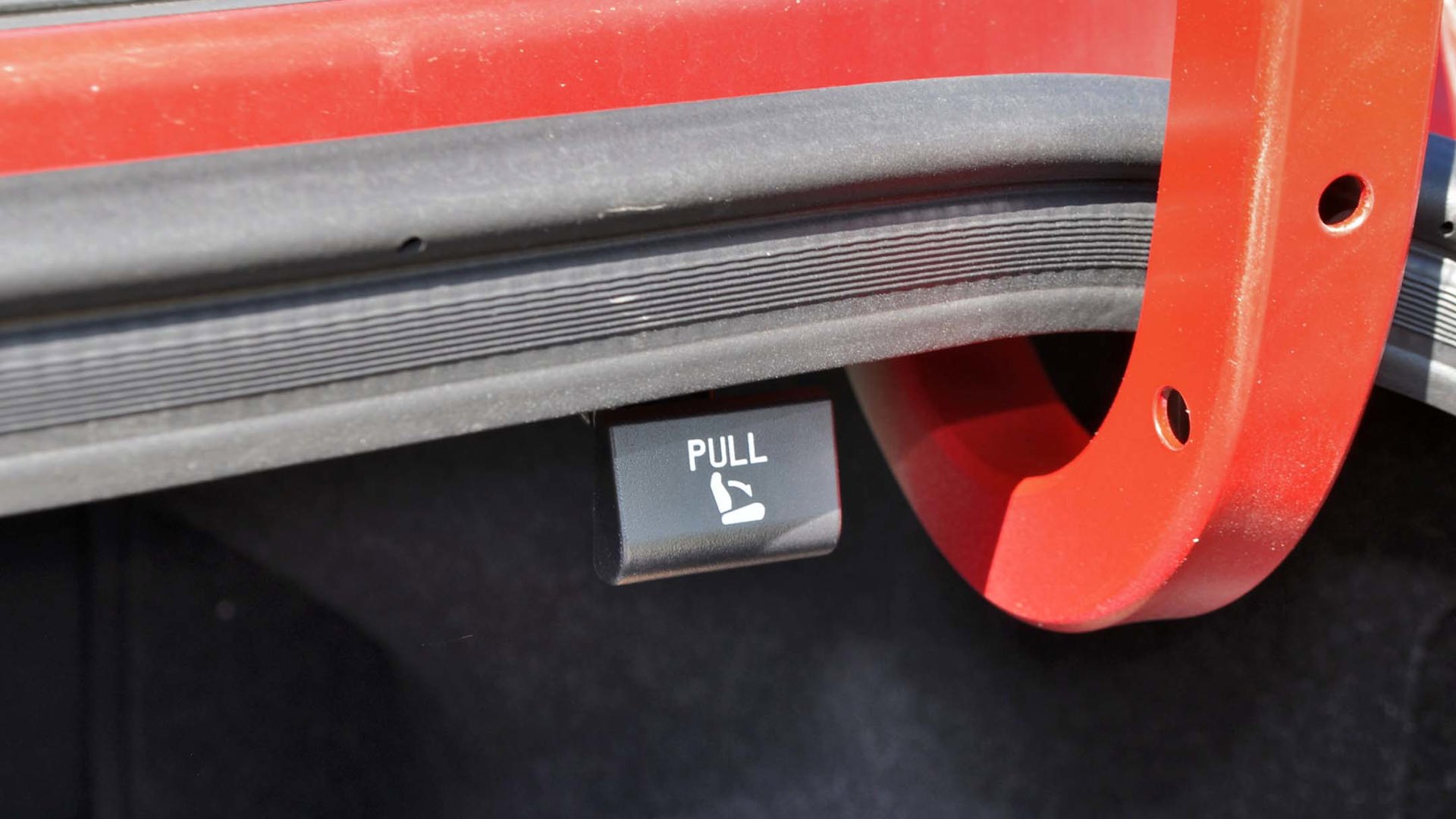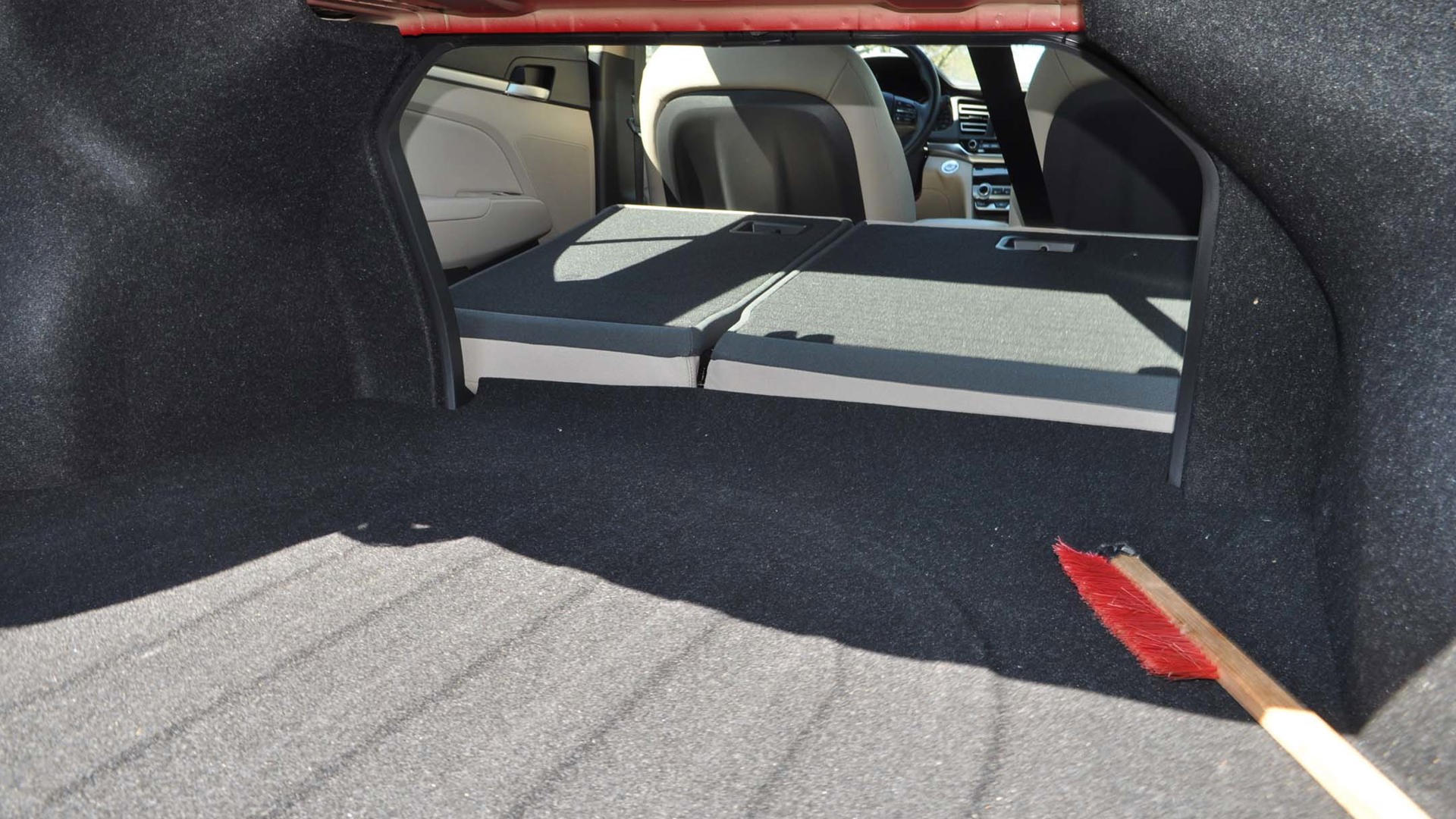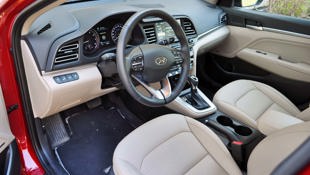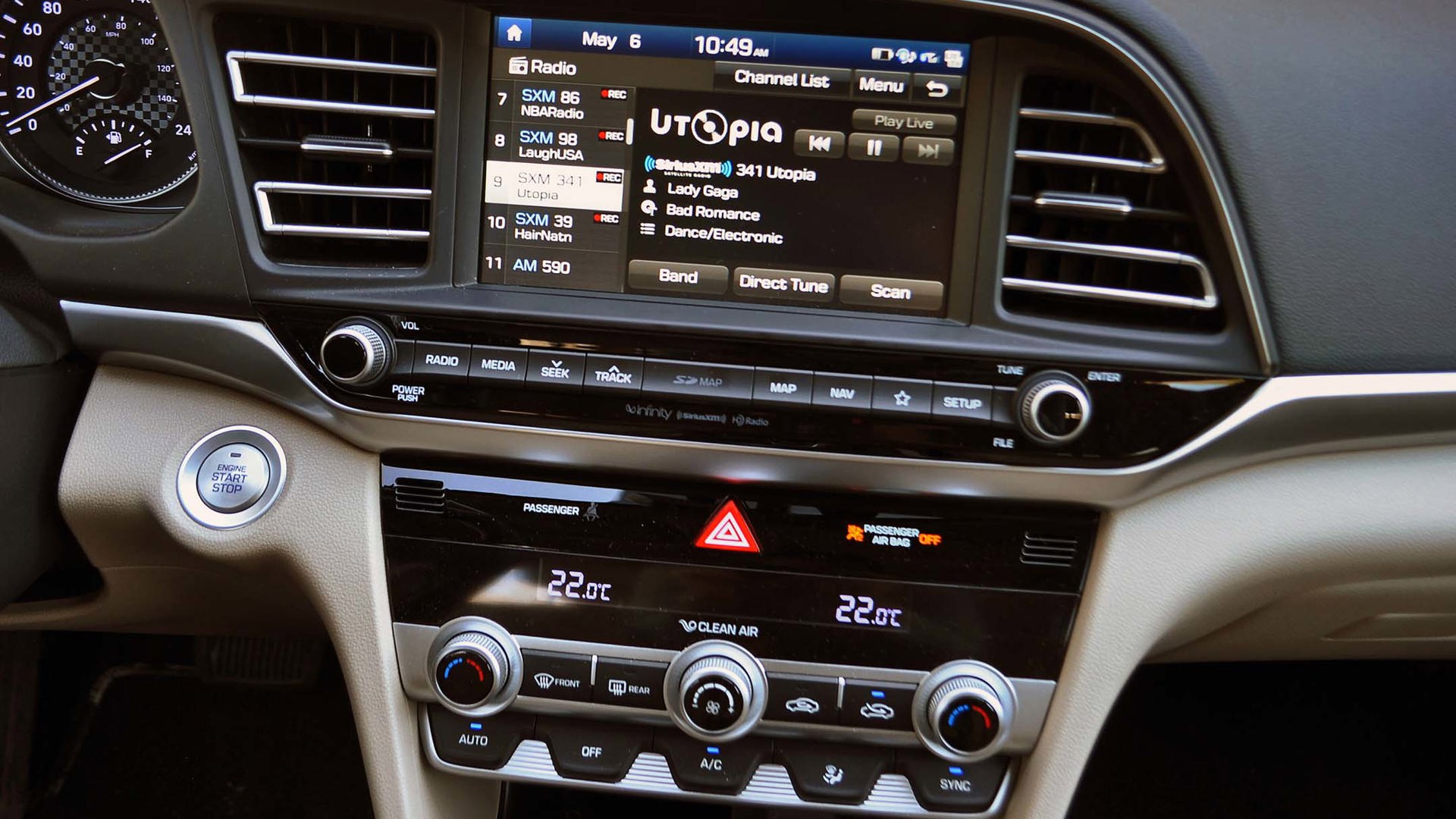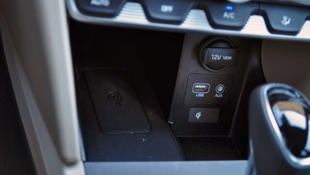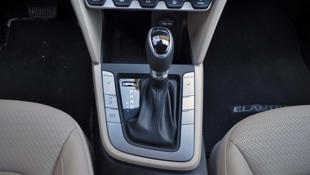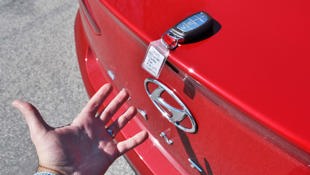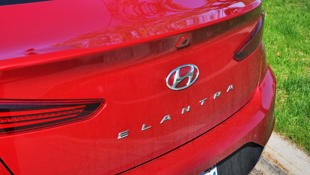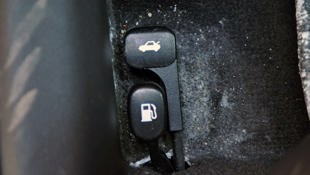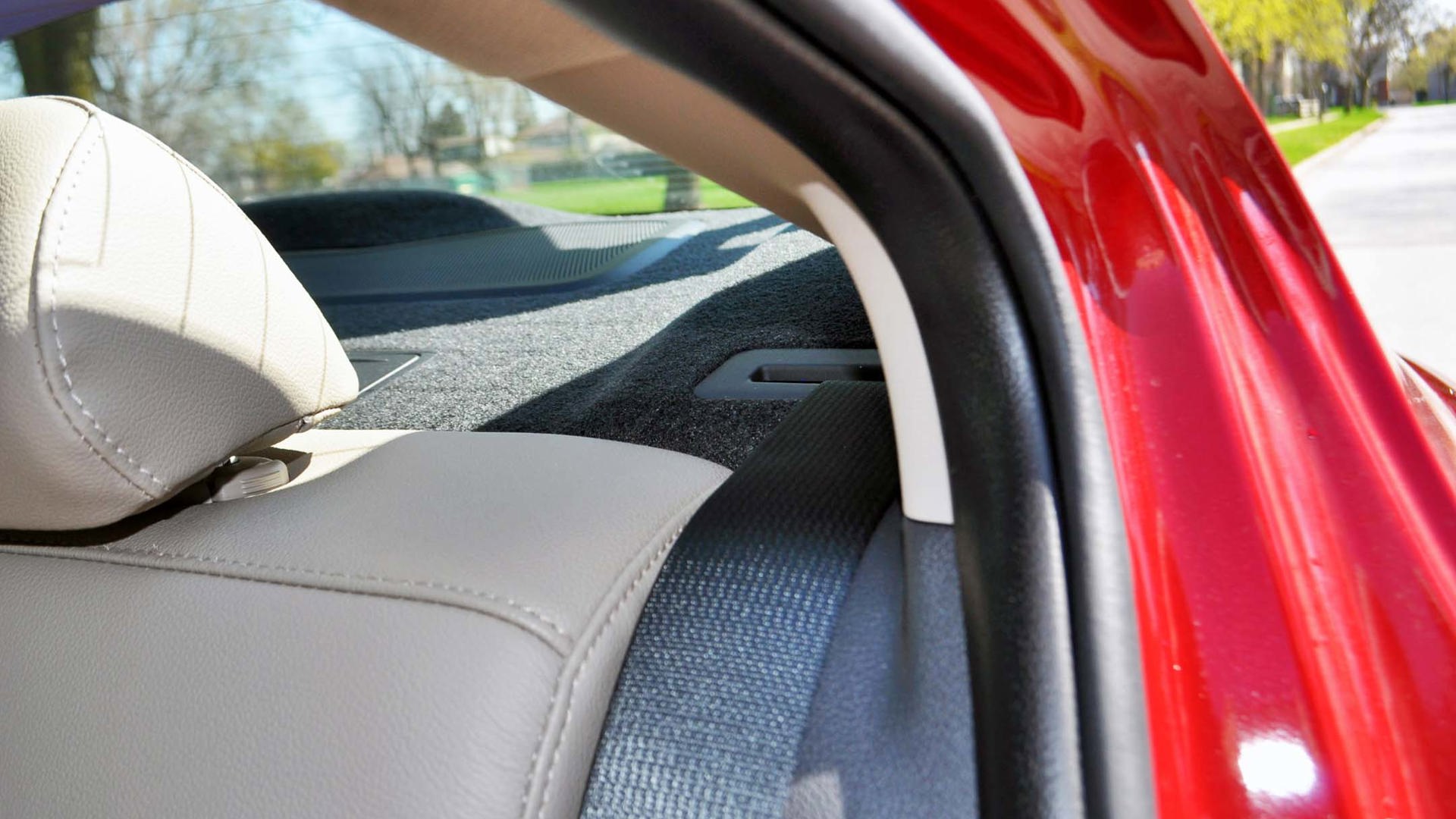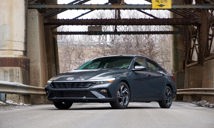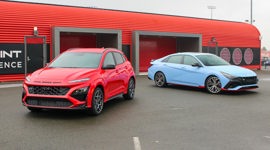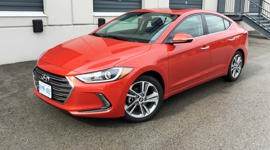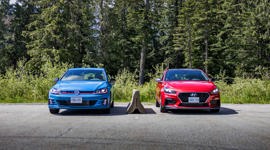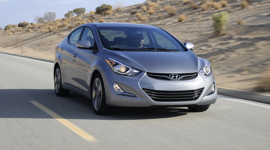 AutoTrader SCORE
AutoTrader SCORE
-
STYLING7/10
-
Safety8/10
-
PRACTICALITY7/10
-
USER-FRIENDLINESS7/10
-
FEATURES8/10
-
POWER7/10
-
COMFORT8/10
-
DRIVING FEEL7/10
-
FUEL ECONOMY8/10
-
VALUE8/10
As one of the few vehicles that has challenged the Honda Civic for its long-standing title of "Best-selling car in Canada", the Hyundai Elantra is a compact car that offers a lot of the value Canadian drivers want, plus a slick-looking hatchback version. For 2019, the Elantra receives a host of updates inside and out that will help it compete with its fellow Civic/Corolla/Mazda3 sales powerhouses.
Styling: 7.5
There’s no doubt the Elantra looks good overall, with sharpened styling front and rear, courtesy a revised grille, front fenders, headlights, and a cleaner trunk design that’s button- and handle-free (sometimes annoyingly so). It’s a clean but somewhat generic design, seemingly meant for mass inoffensiveness, though that’s mostly par for the course in this class.
Inside, it's much the same from a design standpoint, though with only 7,000 km on this fully loaded Ultimate tester, it was surprising to already see some discolouration happening on the beige leather seats.
Safety: 8.5
One of Hyundai’s calling cards is its prodigious features-per-dollar ratio, and this is reflected in its copious safety features. This Ultimate model included a driver’s knee airbag, blind spot warning, rear traffic alert, lane-departure alert with lane-keeping assist, and active cruise control with stop-and-go.
Features: 8
High up on the nice-to-have features list on this top-line Elantra are a wireless phone charger, Android Audio/Apple CarPlay compatibility, heated steering wheel, plus heated seats in the rear as well as in the front. That said, there are two blank buttons that could easily be used for cooled seats, like some versions of the smaller Accent used to offer, which seem like a sad omission in seriously hot weather.
There’s also a booming sound system in this thing that’s worthy of special note. Put it up to three-quarters volume, and the eight-speaker Infinity stereo with pumps out enough bass to make the mirrors go fuzzy, and drown out even the most enthusiastic of carpool karaoke sessions.
Practicality: 7.5
Though the outboard rear passengers have access to warmed seats, there are no rear air vents, USB ports, or anything else in the centre rear console for those in back. There are handy cup holders front and rear– in the centre fold-down section between the rear seats and in rear door panels. Unfortunately, there’s no ski bag pass-through, or a way to fold down those rear seats when you’re standing outside the car, as the Elantra requires you to go back and pop the trunk to access two levers that pull the 60/40 split rear seats down.
User Friendliness: 7.5
I’m all for clean rear styling, but not having an actual button or physical trunk release pad on the Elantra’s rear end means you have to know the trunk's secret handshakes to open - and no, it's not a foot sweep or kick under the rear bumper. Yes, there’s a button on the key fob to open the trunk, but it never seemed to work for me in my week driving it. Digging into the cause, I thought it was perhaps in valet mode, which prevents the trunk from being accessible when you hand over your key. But no, it opened when I pulled the front handle at the driver’s feet, which it shouldn’t in valet mode.
So when I dropped someone off with luggage, I couldn’t open the trunk while standing at the back of the car, as the key fob button didn’t work again – I had to walk back to the front, pull the handle, and then walk back and take out what was needed from the trunk. (Update: Hyundai has since sent me a video of their new trunk release that's supposed to open by touching the Hyundai badge at the rear, or even just standing behind it for three seconds; but it also shows the first way to open is to press and hold the trunk button on the fob, which didn't work for me multiple times in real life.)
On the plus side, the leather seats were handy for cleaning up after pets, especially ones with wet or dirty feet on rainy days. The dark carpeting, meanwhile, was able to hide messes – whether from pet, child, or adult. Given the discolouration on the leather seating surfaces, sticking with a darker colour seems the wiser move here.
Comfort: 8.5
Space and overall comfort inside the Elantra is right up there with the best in the class, especially in front and rear headroom. Sure, the leather seats don’t feel as sumptuous as one will find in a luxury car, but in multiple two-hour-plus highway stints behind the wheel while driving to Ottawa and back, the Elantra’s quiet demeanour, satellite radio, and Apple CarPlay all contributed to a luxury-vehicle-worthy experience.
Power: 7.5
For a mainstream compact sedan, there’s a decent amount of poke from this 2.0-litre four-cylinder engine, never feeling under-powered, but never quite shining in this department either. Its 147 hp lands at the low end of this class, but still right in the mix of the ’19 Civic/Mazda3/Corolla party. Its torque output of 132 lb-ft at 4,500 rpm is a more notable 30 to 54 lb-ft below the more powerful Honda Civic and Mazda3, respectively. Hyundai saves a more powerful 161 hp and 150 torque mill for the sportier Elantra GT hatchback, and a 201 hp turbo version for the Elantra Sport.
Driving Feel: 7.5
This is clearly not a car that begs to be driven hard, though it does have a Sport mode to help liven up driver involvement, on top of "Smart" and Eco modes. There are no shift paddles, but you can move the shifter over to the left to choose your own gears. The Elantra’s Sport mode does add a bit of sprightliness by sharpening up the rev counts and shift points, though it’s more noise than anything else.
Fuel Economy: 8
Officially rated at an overall average of 7.4 L/100 km, the Elantra achieved a rather impressive 6.9 L/100 km during my week of over 800 km with it. Yes, that was largely highway clicks, and half a litre per hundred beyond its official highway estimate. But considering the constant A/C use and the roughly 120 km/h average highway speed, that’s very reasonable real-world fuel economy.
Value: 8.5
A traditional Hyundai strength, the Elantra still scores high in overall value, but not quite as high as it used to. Perhaps it’s because of those now-unavailable cooled seats, or the trunk and rear seats that aren’t as user-friendly as they could be. But in all the areas that tend to matter most in this category – features per dollar, space, comfort, fuel economy, safety, and overall practicality – the Elantra still scores high right across the board.
Conclusion
If it was my money, I’d look closely at the Elantra GT hatchback over the sedan: not only is it more practical space- and flexibility-wise, its top Luxury trim also rings in less than this top-line Ultimate one.
There are also a few enhancements in store for 2020 Elantra models that Hyundai just announced in the US, with lower overall fuel consumption figure of 6.8 L/100 km being the highlight, and new safety features offered like active forward collision braking and a fatigue warning system, though there's no official confirmation on those features here.
Either way, you can see how the Elantra has given the Civic a run for its money as the best-selling car in Canada, and how its regular updates continues to keep it right up there with the top entrants in this shrinking but still massive market segment.
| Engine Displacement | 2.0L |
|---|---|
| Engine Cylinders | I4 |
| Peak Horsepower | 147 hp @ 6,200 rpm |
| Peak Torque | 132 lb-ft @ 4,500 rpm |
| Fuel Economy | 8.3/6.4/7.4 L/100 km cty/hwy/cmb |
| Cargo Space | 407 L |
| Model Tested | 2019 Hyundai Elantra Ultimate |
| Base Price | $27,399 |
| A/C Tax | $100 |
| Destination Fee | $1,705 |
| Price as Tested | $29,404 |
|
Optional Equipment
$200 – Fiery Red paint $200
|
|
